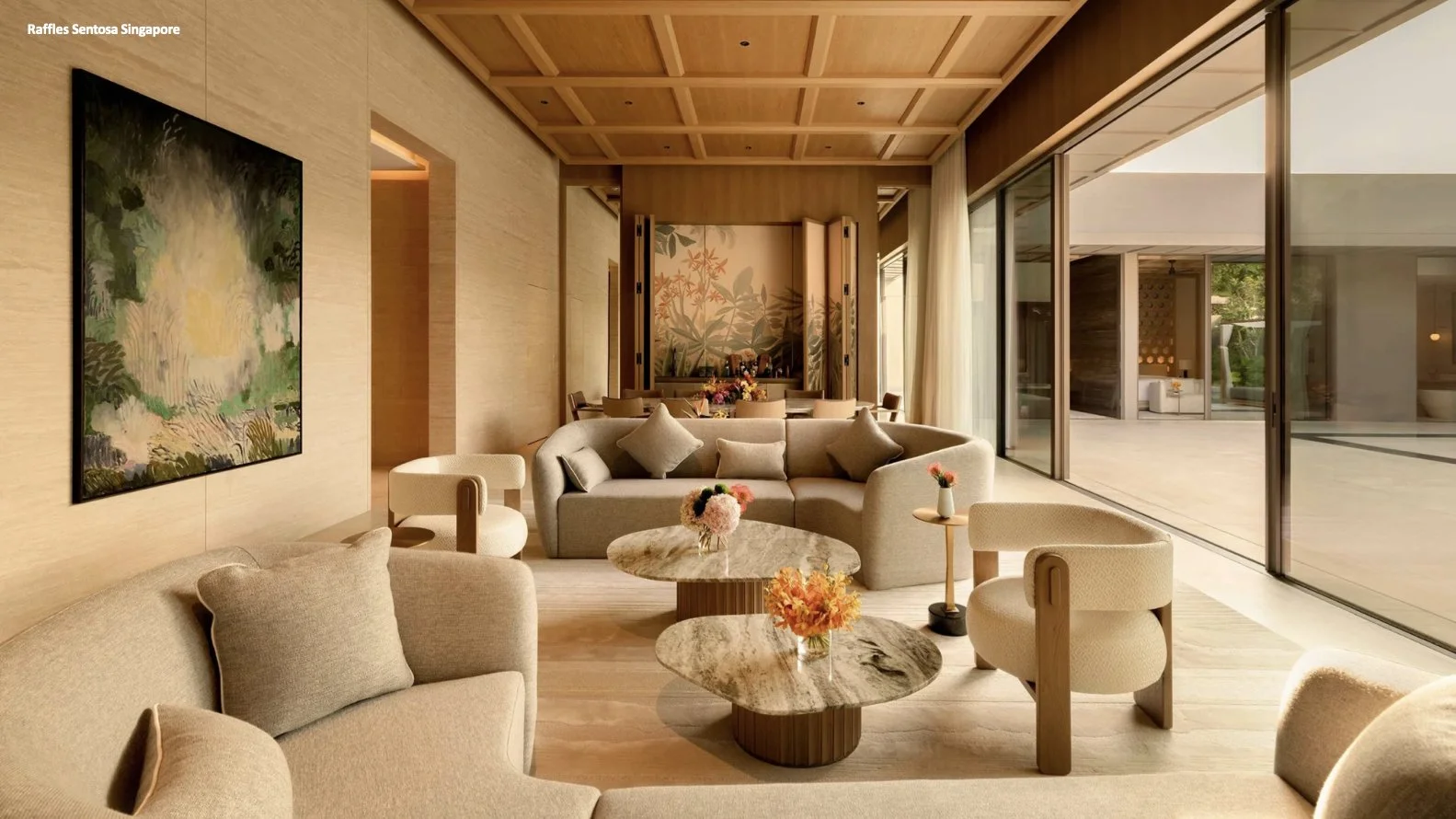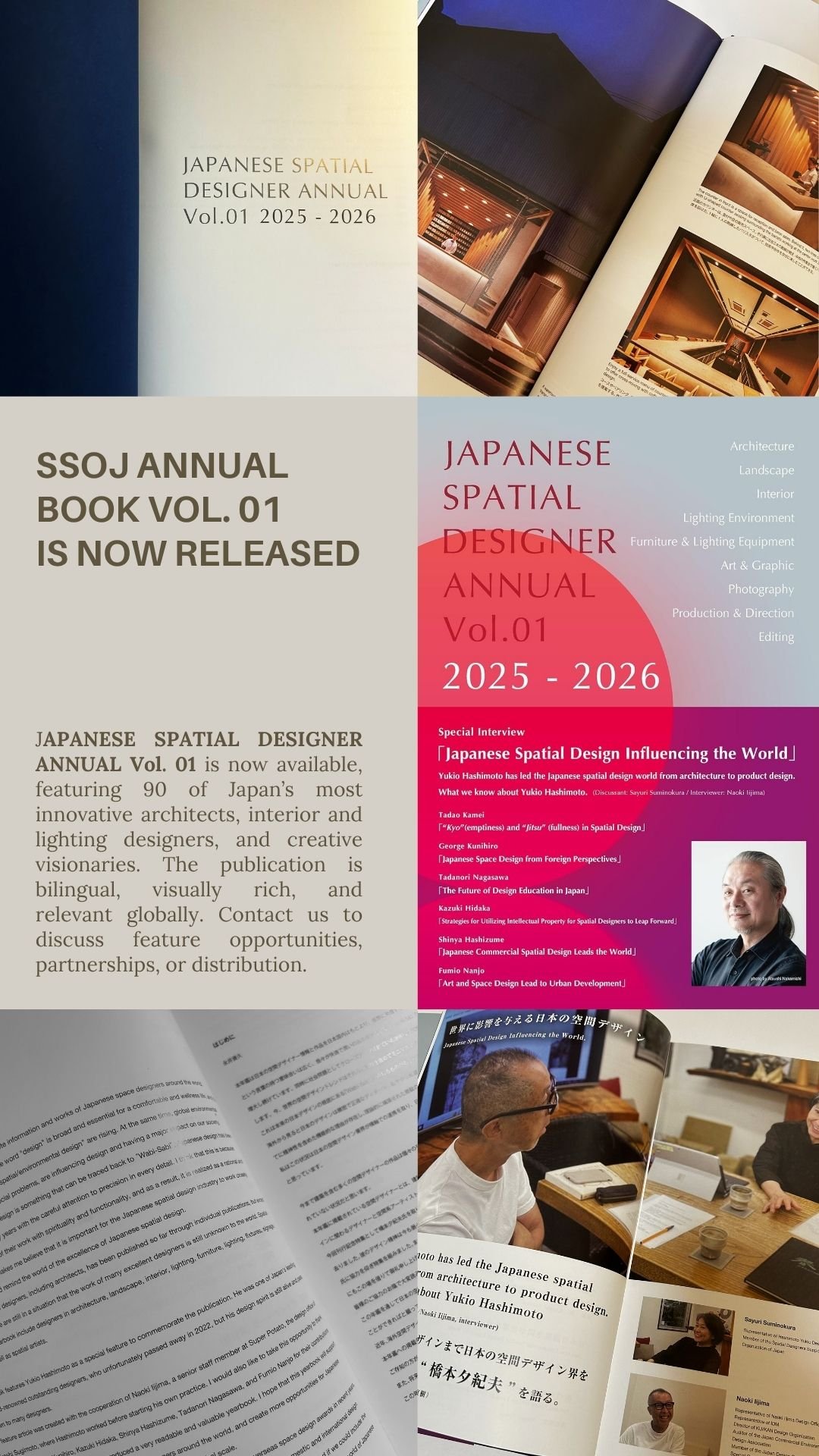The Privilege of Tranquillity - Raffles Sentosa Singapore
Set between sea and tropical rise, Raffles Sentosa Singapore offers a contemporary lesson in calm. Yabu Pushelberg’s interiors and Stellar Works’ crafted furnishings create a quietly choreographed world where materials, light, and landscape work in unison. This is luxury without noise—an architecture of stillness, a design language of restraint, and a hospitality experience that prizes tranquillity above theatrics.
Raffles Sentosa Singapore opens with a promise, expressed not in grand gestures but in the gentle language of place and purpose. The experience welcomes guests into a world where every detail is considered, each space designed to invite calm, and every moment shaped by quiet, unwavering confidence.
Nestled between gentle shorelines and the soft embrace of tropical hills, Raffles Sentosa Singapore redefines contemporary luxury. The environment never overwhelms. Every aspect orchestrates an experience, inviting guests into a measured rhythm where design, light, and nature engage in quiet dialogue. Hospitality moves beyond spectacle, becoming a state of mind shaped by the resonance of place and the elegance of restraint.
Yabu Pushelberg’s interiors flow with the grace of a gentle tide, each space dissolving seamlessly into the next, courtyards merging with water, and expansive sightlines drawing the island’s landscape indoors. The architecture exudes an effortless calm, defined by purposeful restraint. Each softened edge and elongated transition calibrates the rooms to frame the horizon, celebrating rather than competing with it.
Within this contemplative sanctuary, Stellar Works embarks on one of its most ambitious hospitality collaborations to date. The magnitude is impressive, yet scale alone does not define the project. The true story lies in the coherence of craft, a harmonious consistency of touch, tone, and timber across a constellation of private villas. Over a thousand pieces of furniture have been meticulously crafted for Sentosa, each revealing the artistry of the hand rather than the repetition of the machine. The warmth of hand-finished timber, the authenticity of woven rattan, and grounded textures that echo the island’s botanical palette all speak to a legacy of careful making.
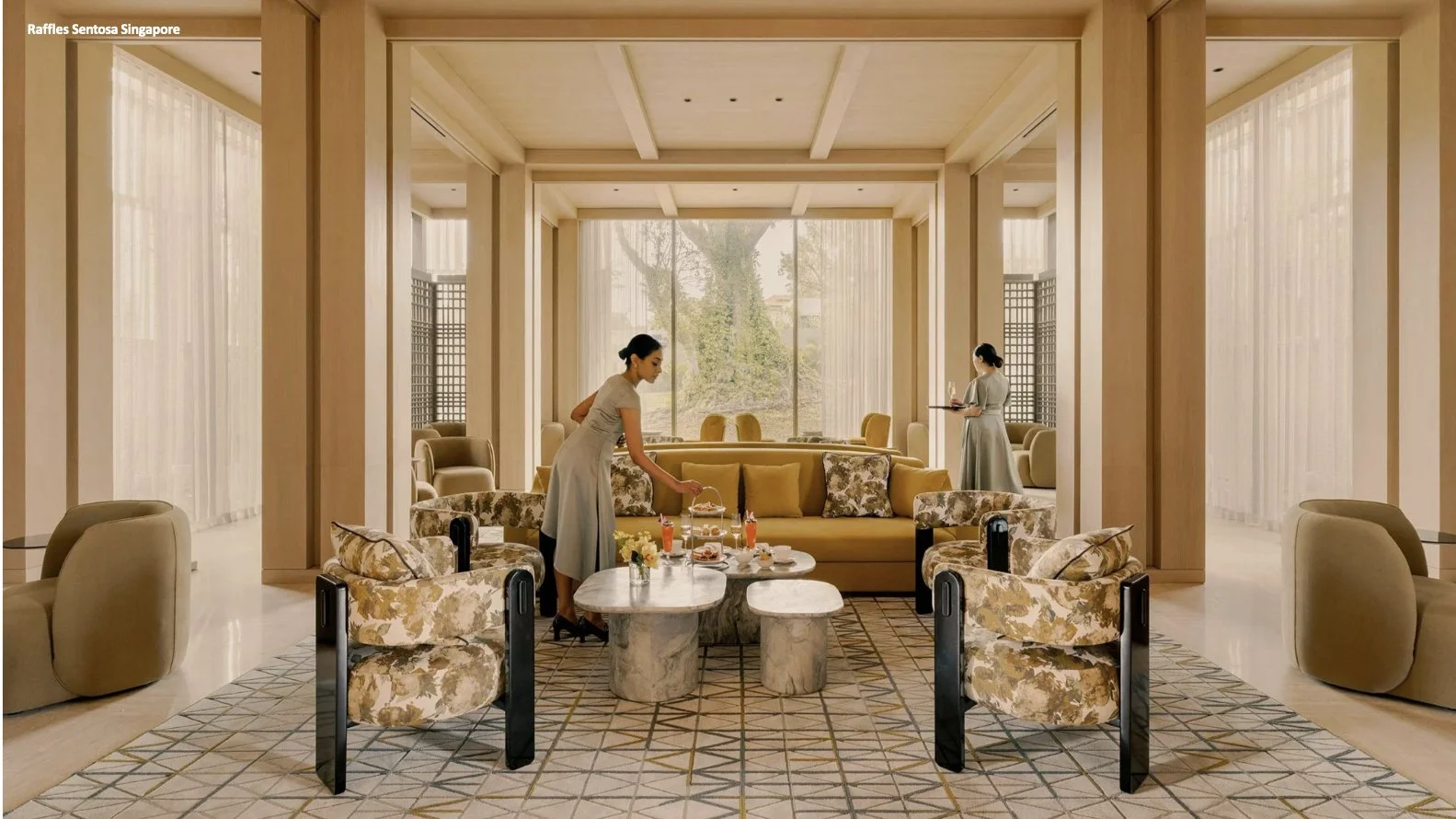
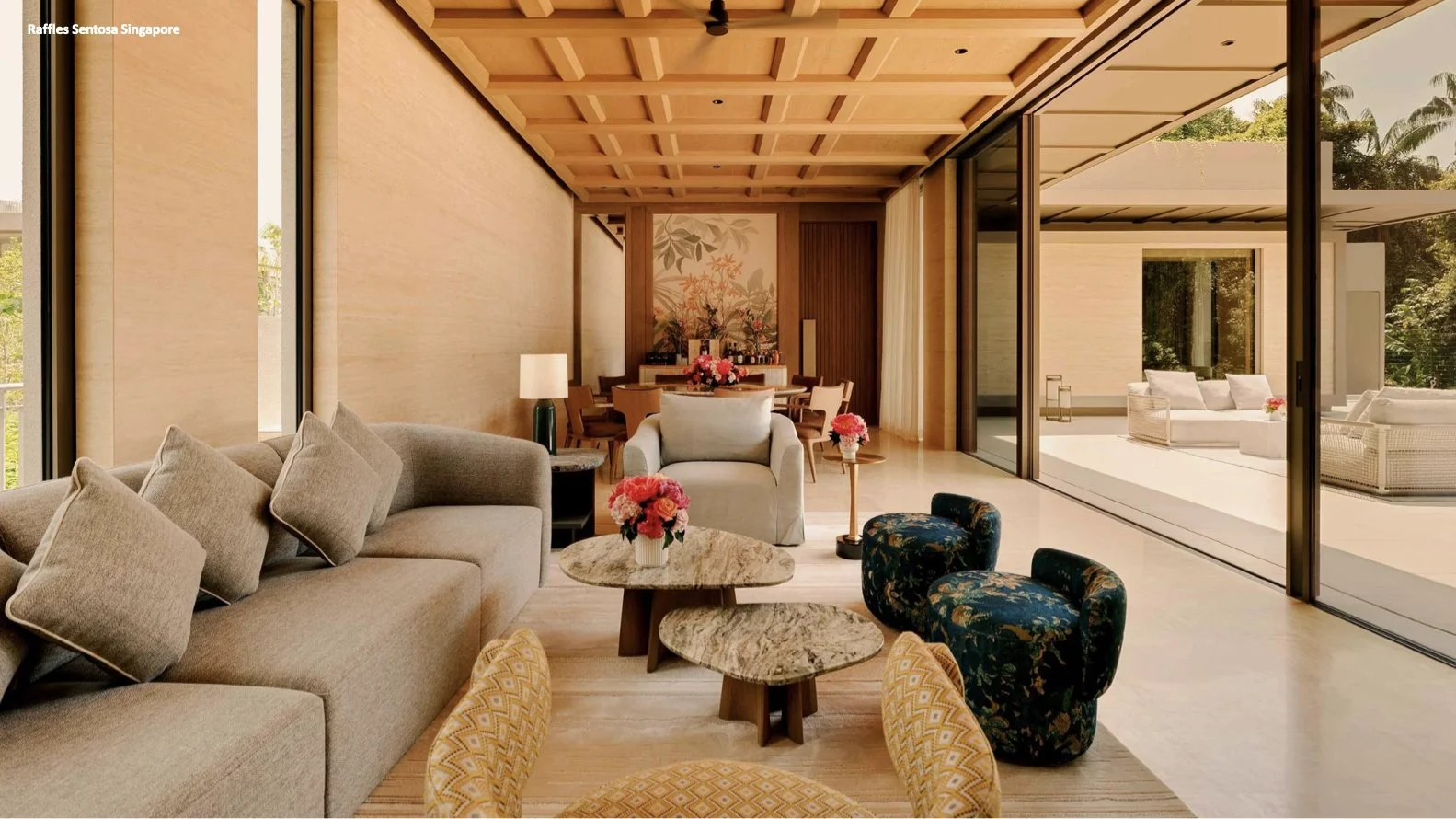
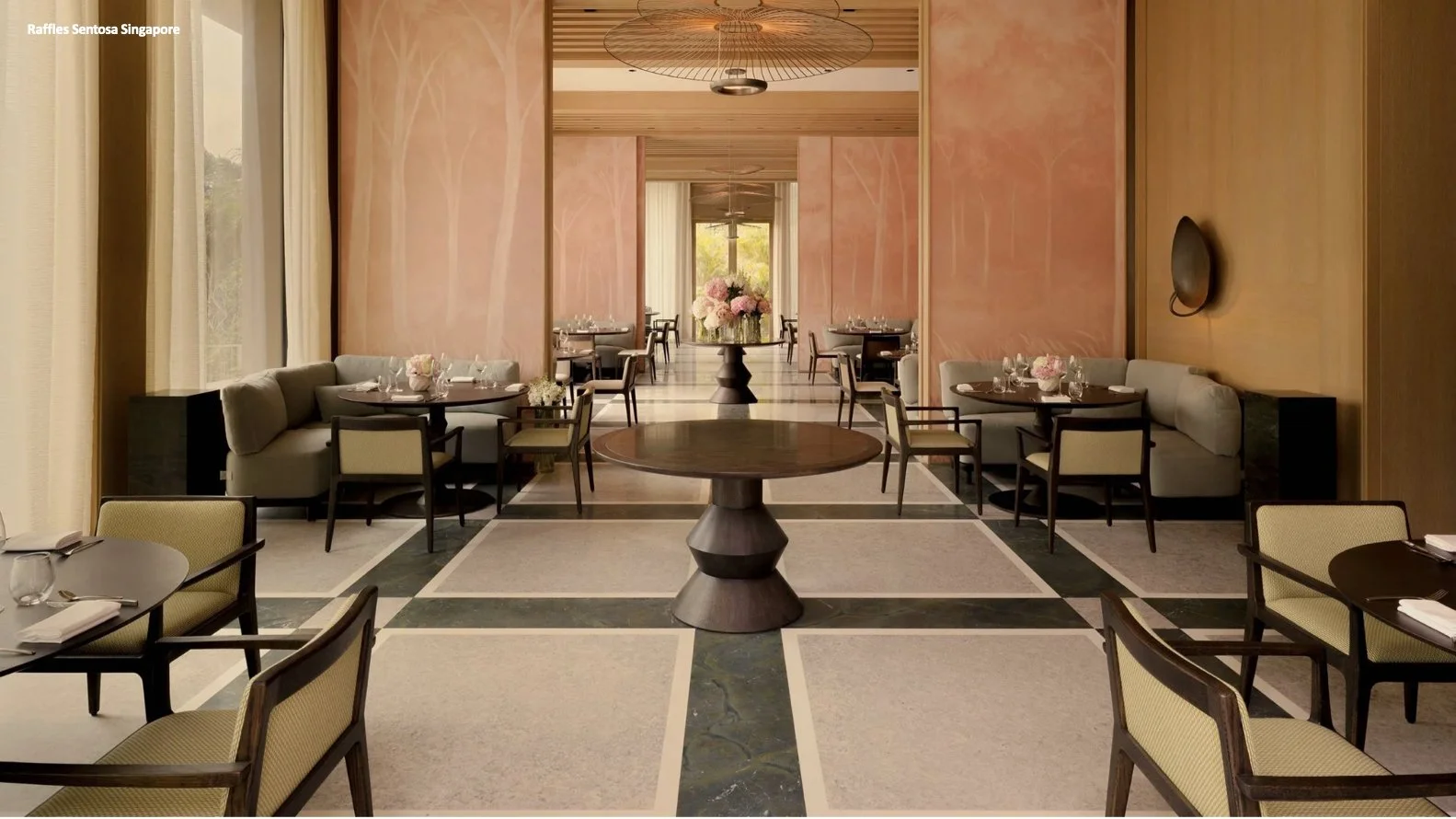

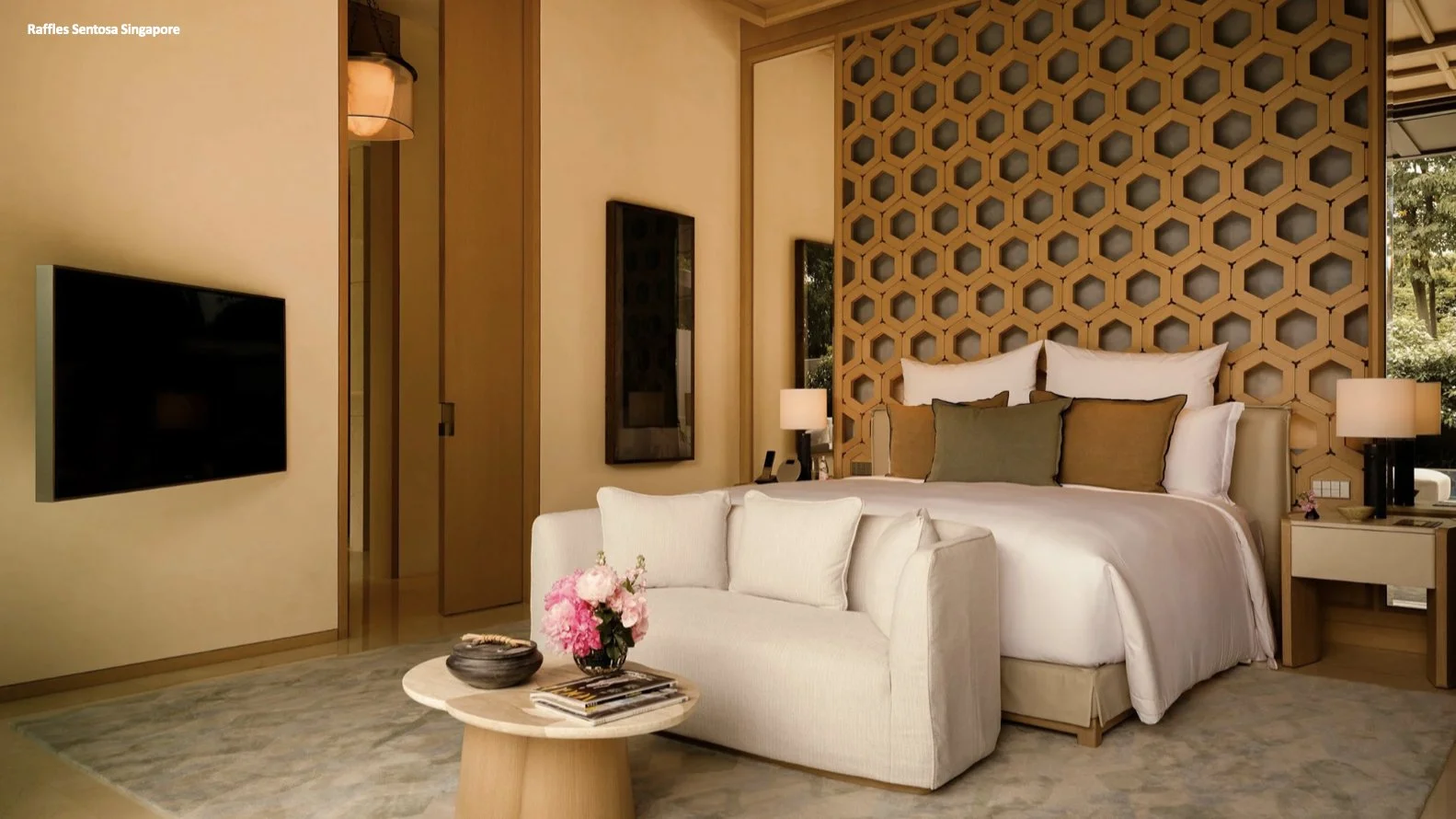
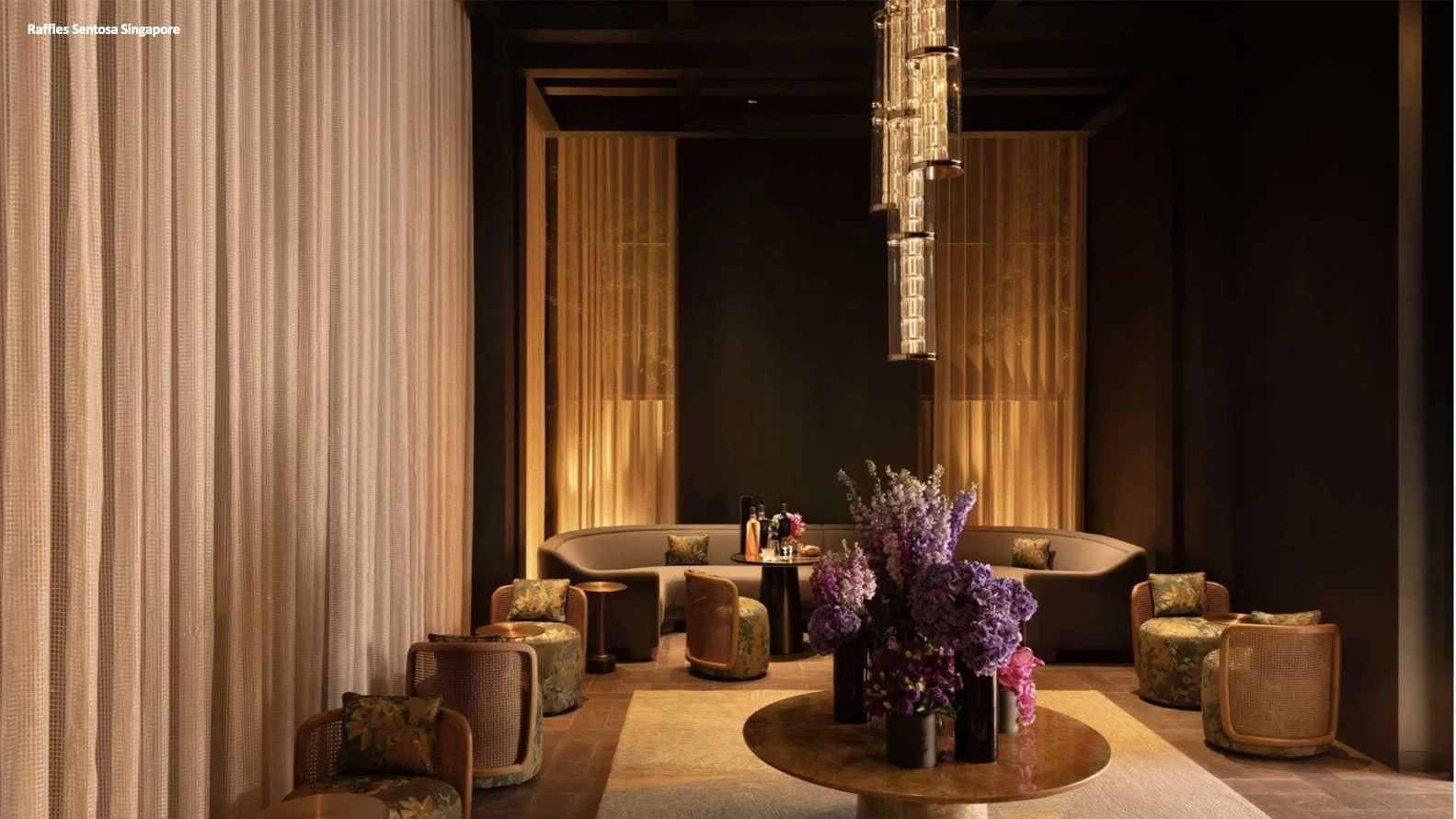
Materiality remains deliberately understated. Travertine, pale woods, and naturally veined surfaces offer quiet hospitality, absorbing light with grace. The colour palette mirrors the surrounding terrain: subtle greens, sandy hues, and earth tones that extend the gardens inward. Luxury comes not from ornament but from the elemental. Comfort is crafted from atmosphere, not accumulation.
Stellar Works’ cross-cultural identity, blending Japanese sensibility with Shanghai craftsmanship, resonates throughout the project. The furniture embodies clarity and precision, distinctly Asian in discipline yet global in ease. Every piece supports the architecture, inviting guests to settle into a sense of calm rather than simply occupy a space. In a region often defined by spectacle, the project stands as a testament to luxury found in proportion, stillness, and the quiet integrity of materials. Amid quiet transitions in the landscape, Stellar Works introduces a distinct layer of refinement that feels both crafted and effortless. The brand’s vision is woven into all 62 villas, where a comprehensive family of custom furnishings supports the resort’s calm, residential rhythm. Sofas with softened silhouettes, sculpted lounge chairs, dining pieces shaped for long conversations, bespoke beds, and cabinetry all share a unified language of warmth and tactility. Each piece settles naturally into the architecture, with hand-finished timber, woven rattan, and botanical tones echoing the island’s light and vegetation. The outcome is not a mere display of scale but a coherent mood. Every element is tuned to the same quiet frequency, reinforcing the resort’s vision of tranquillity through thoughtful, understated craft.
Raffles Sentosa reveals more than a collection of villas; it presents a worldview. Landscape, design, and craft move in harmony, each element in quiet dialogue. The most sophisticated gesture is often the gentlest, suggesting a future for hospitality in which the greatest luxury is not spectacle but the privilege of tranquillity.
For more information,
Please visit: https://www.stellarworks.com | https://www.raffles.com/sentosa/
Photographer: Daniel Koh
#stellarworks #rafflessentosa #design #hospitality #YabuPushelberginteriors
Helsinki Design Week celebrates its 20th anniversary as a meeting place for architecture and design
Design is an essential cornerstone of Helsinki, the capital of the world’s happiest nation and a UNESCO City of Design. Here, design plays a fundamental role in fostering quality of life and building a sustainable future. Organized for the 20th time this September, Helsinki Design Week is the largest architecture and design festival in the Nordics, inviting both professionals and the public to discover and discuss topical themes while creating new connections.
Design is an essential cornerstone of Helsinki, the capital of the world’s happiest nation and a UNESCO City of Design. Here, design plays a fundamental role in fostering quality of life and building a sustainable future. Organized for the 20th time this September, Helsinki Design Week is the largest architecture and design festival in the Nordics, inviting both professionals and the public to discover and discuss topical themes while creating new connections.
“I would describe Helsinki Design Week as a platform that brings together our design communities in a creative and collaborative manner and connects them to the city of Helsinki. We are proud of our contributions to Helsinki becoming, and remaining, a true design capital,” says Kari Korkman, founder of the festival.
Founded in 2005, Helsinki Design Week emerged as part of a collective effort to reintroduce Helsinki as a creative hub that celebrates the diversity of design in its own unique way. At the time, the design and architecture landscape was somewhat siloed. HDW was launched to build new connections with an open and inclusive approach, helping to demystify design and making it a visible and approachable part of everyday urban life.
“Our collaboration with Helsinki Design Week reflects the city’s deep commitment to design as part of everyday life. Through initiatives such as the Helsinki Design Awards, we celebrate creativity and highlight how design can shape our future – starting with the youngest generations. The forthcoming Architecture and Design Museum will further demonstrate Helsinki’s long-term investment in design and architecture, ensuring it continues to inspire and serve the city well into the future,” says Hanna Harris, Chief Design Officer at the City of Helsinki.


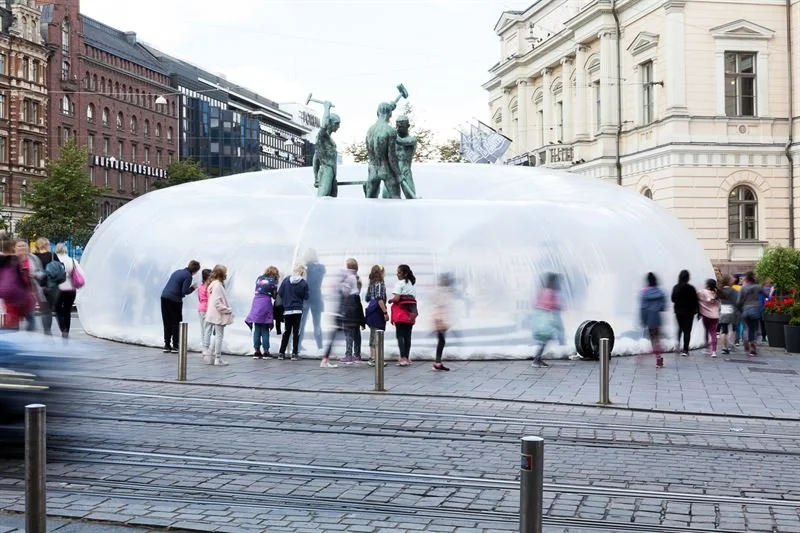


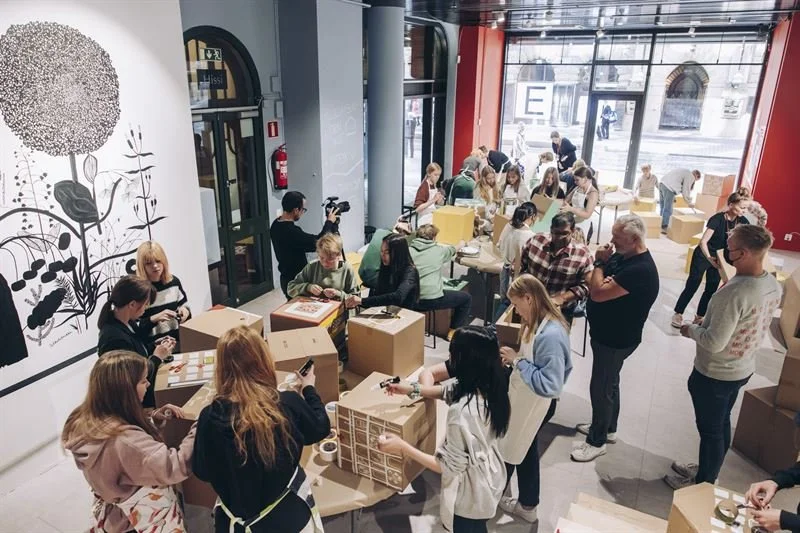
The festival is particularly known for its creative use of city spaces: each year it discovers a new venue for its main event. These locations range from warehouses to historic palaces to hidden architectural gems, each contributing to the sense of exploration that characterizes the festival.
Designing Happiness
This year’s main event takes place at Suomitalo, a granite palace from 1909 located next to the Old Church of Helsinki. While the Armas Lindgren–designed building is as central as can be, it often goes unnoticed by those accustomed to its quiet façade. By inviting designers, architects, artists, Helsinkians, and visitors inside, Helsinki Design Week gives the house a new, contemporary voice.
The festival’s main exhibition will explore the theme of designing happiness. In 2025, Finland was ranked the world’s happiest country for the eighth year in a row, and Helsinki Design Week argues that design plays a significant role in this achievement. The festival program includes talks, exhibitions, a design symposium, the annual Design Market, and the HDW Children’s Design Week for the youngest audience.
Helsinki Design Week runs from September 5–14. The full program is available at helsinkidesignweek.com
Unknown Brutalism Architecture in Hong Kong - A Visual Testament to a Forgotten Legacy
DETAILS AND AESTHETICS is a stirring tribute to Hong Kong’s often-overlooked Brutalist architecture, revealing the striking beauty and enduring significance of 34 concrete landmarks. Through Kevin Mak’s evocative photography and Bob Pang’s insightful writing, this visual archive invites readers to rediscover the city, experiencing its untold stories and resilient spirit, one bold façade at a time.
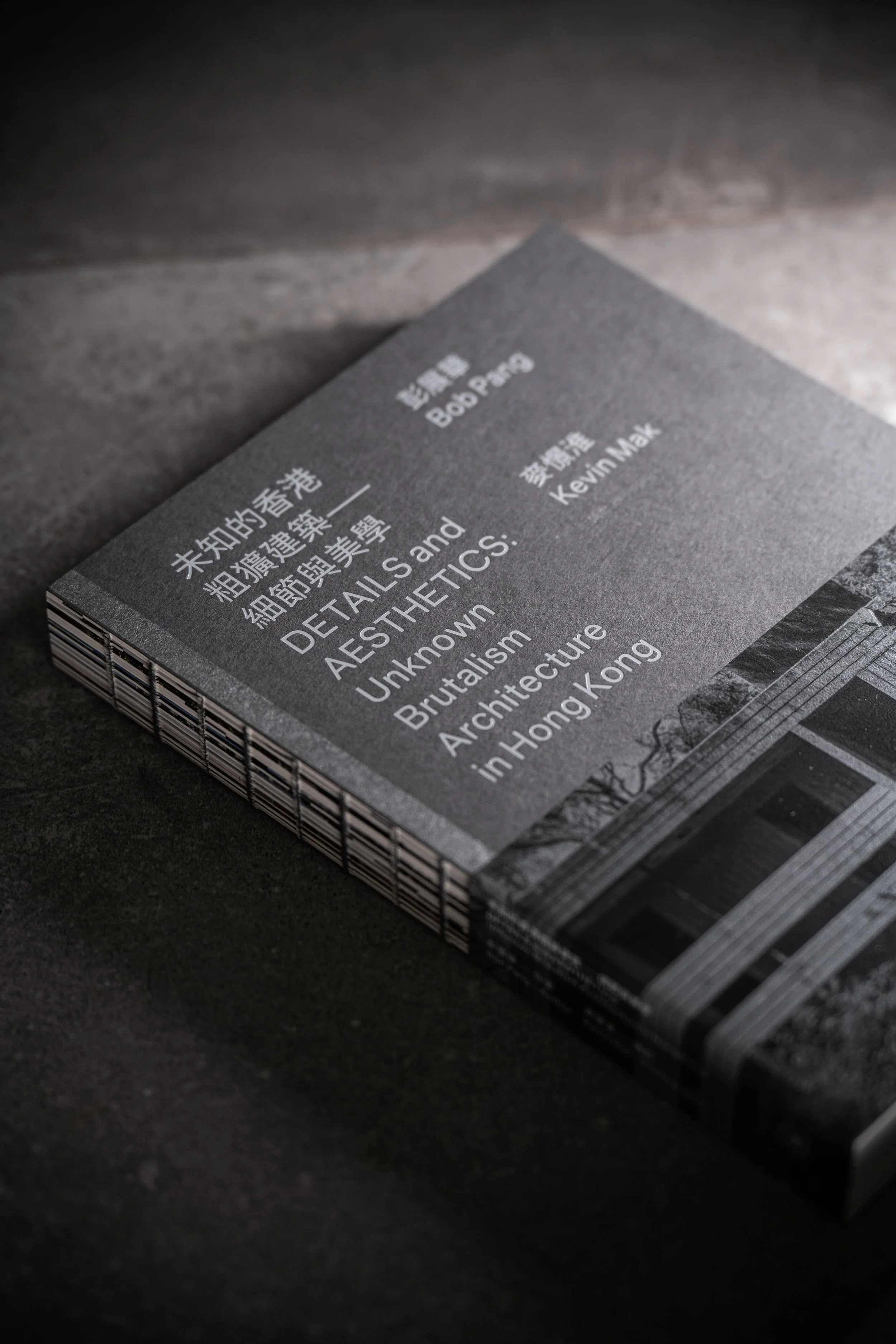

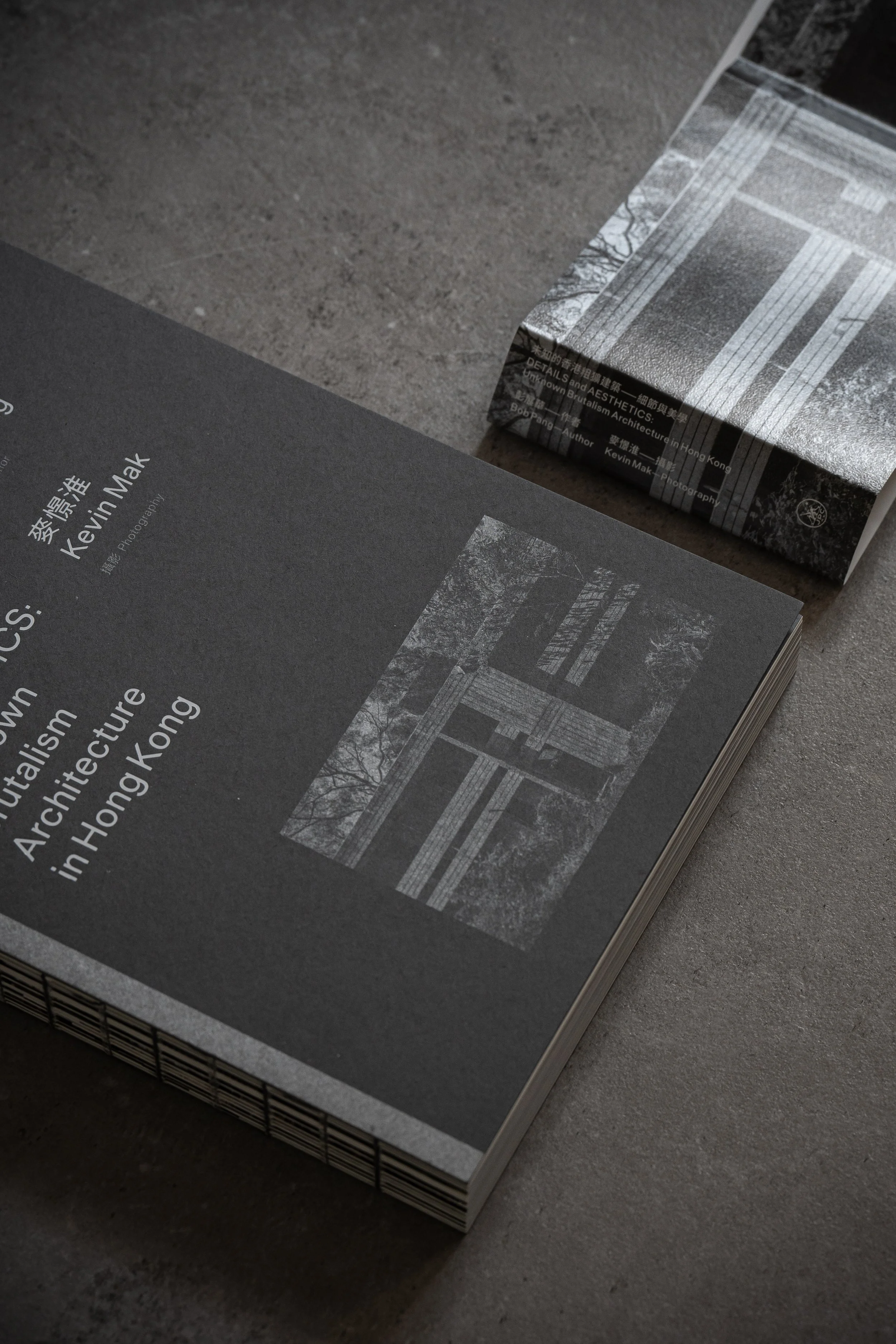






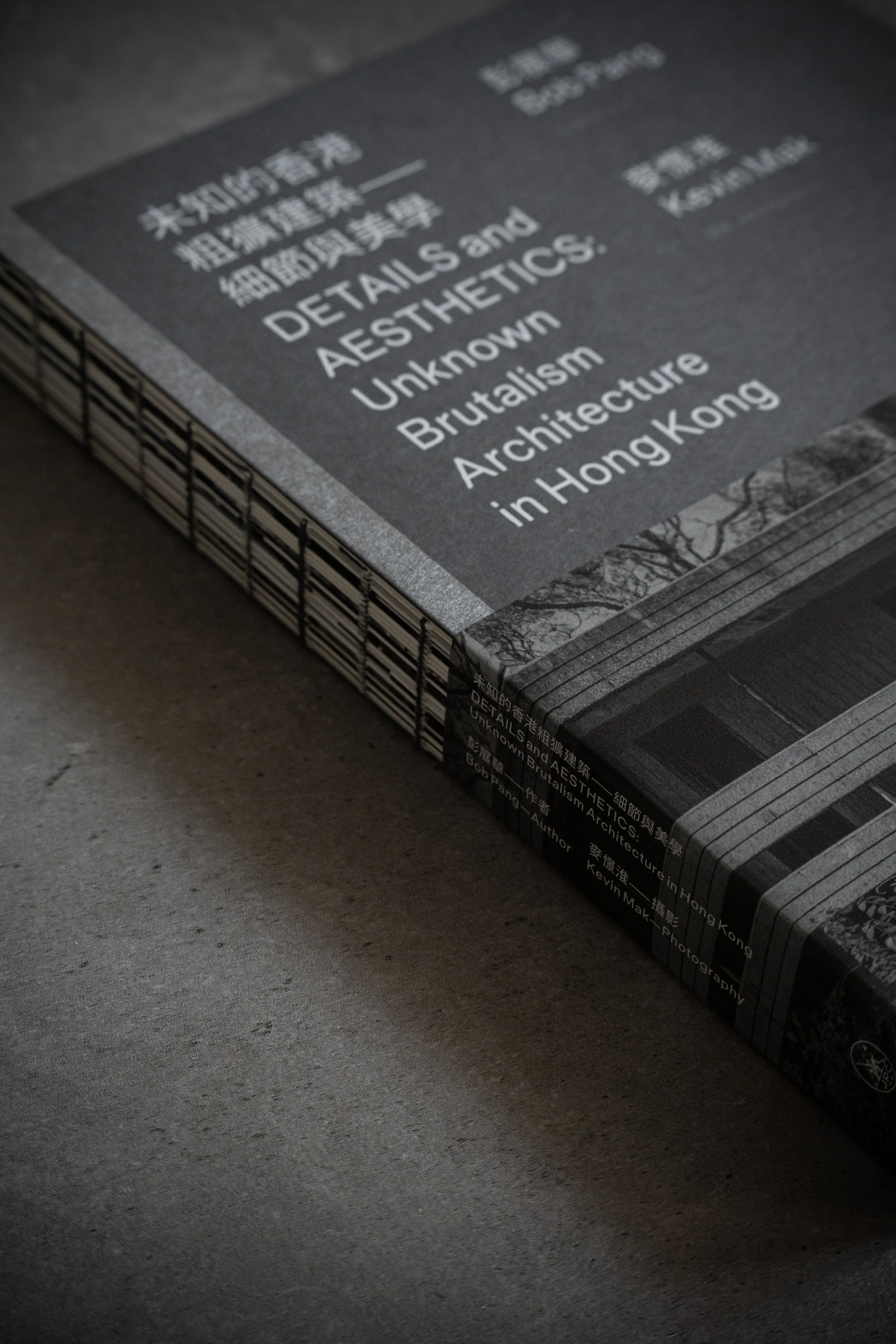
In an era where sleek innovation and visual spectacle often dominate architectural narratives, DETAILS AND AESTHETICS: Unknown Brutalism Architecture in Hong Kong stands as a compelling counterpoint, an intimate visual essay and thoughtful exploration of one of the city’s most misunderstood and striking architectural movements.
Building on the legacy of the acclaimed Unknown Brutalism Architecture in Hong Kong, this new edition boldly doubles its impact, featuring twice as many Brutalist case studies, meticulously captured by award-winning architectural photographer Kevin Mak and curated with the discerning editorial vision of architect-researcher Bob Pang.
Spanning more than three years of fieldwork, this book transcends the boundaries of a traditional monograph; it is a visual archive, a cultural reckoning, and an open invitation to rediscover Hong Kong through a transformed lens. Joined by a team of twenty architects, students, and creatives, the authors scoured the city’s districts, unearthing overlooked gems, monuments to resilience, experimentation, and functional beauty. The result: a portfolio of 34 Brutalist buildings, meticulously catalogued with 272 evocative images selected from over 3,000 frames.
Brutalism in Hong Kong is more than a stylistic statement; it embodies an era of stoicism and urban pragmatism, with its stark lines and raw textures echoing the social and political climate of its time. In DETAILS AND AESTHETICS, this historical narrative is reimagined as a journey, quietly powerful and visually arresting.
This marks the first dedicated photographic work by Kevin Mak, whose experience at OMA Hong Kong and curatorial projects such as @streetsignhk reveal a keen eye for the nuanced interplay between people, place, and the built environment. His evocative images are paired with Bob Pang’s reflective writing, giving readers a layered understanding of space, one that honors architectural rigor while embracing the emotional resonance of life within concrete walls.


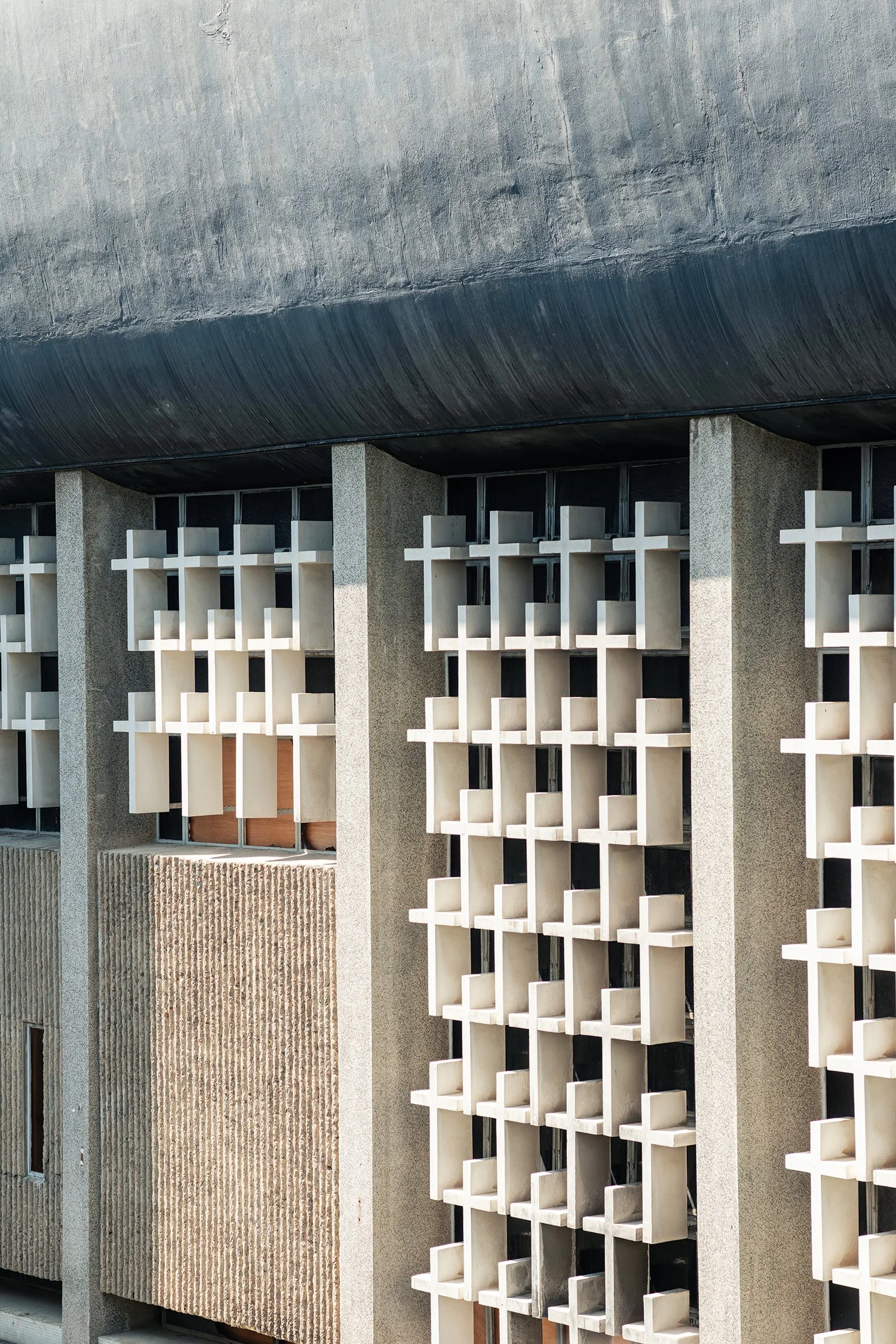


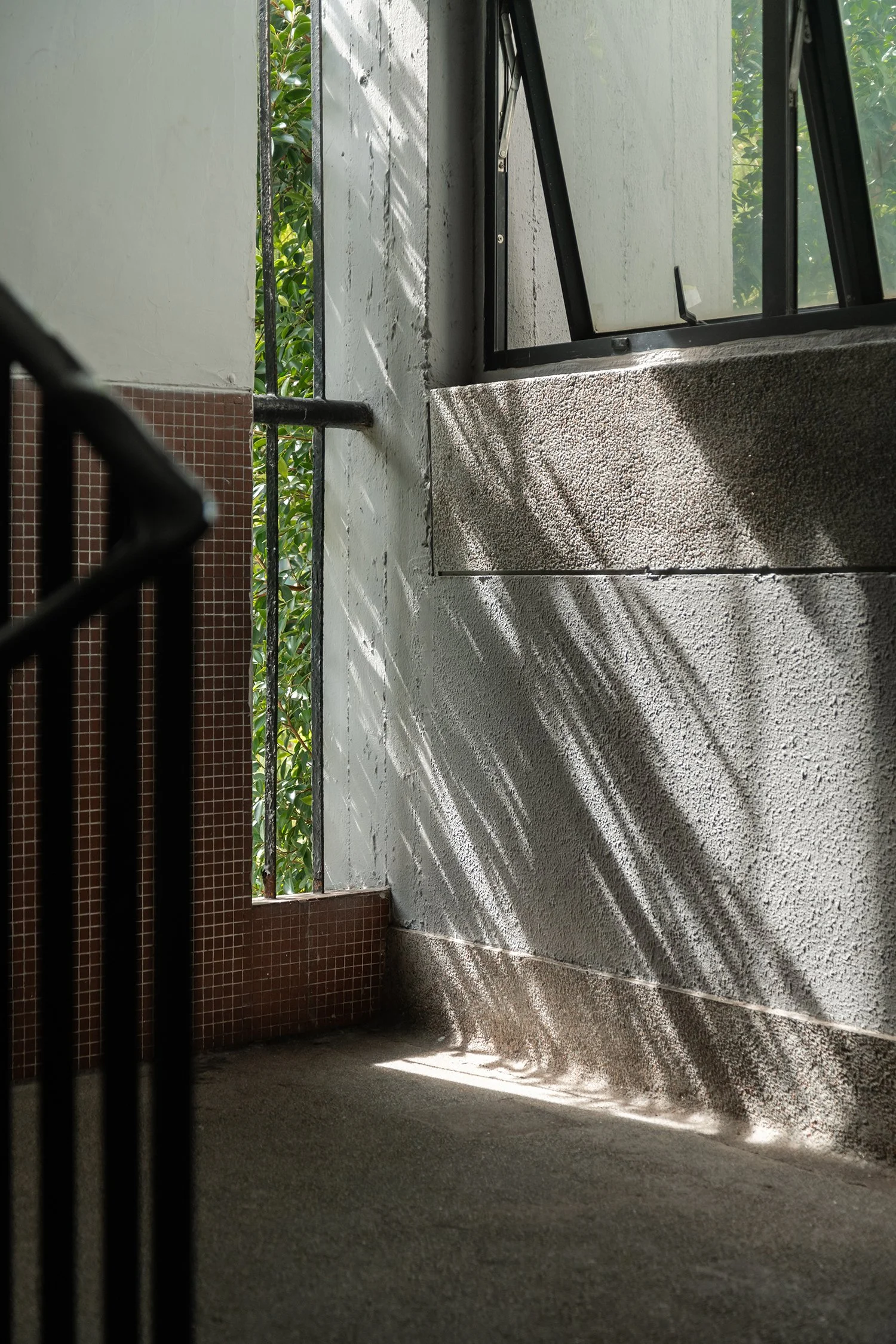

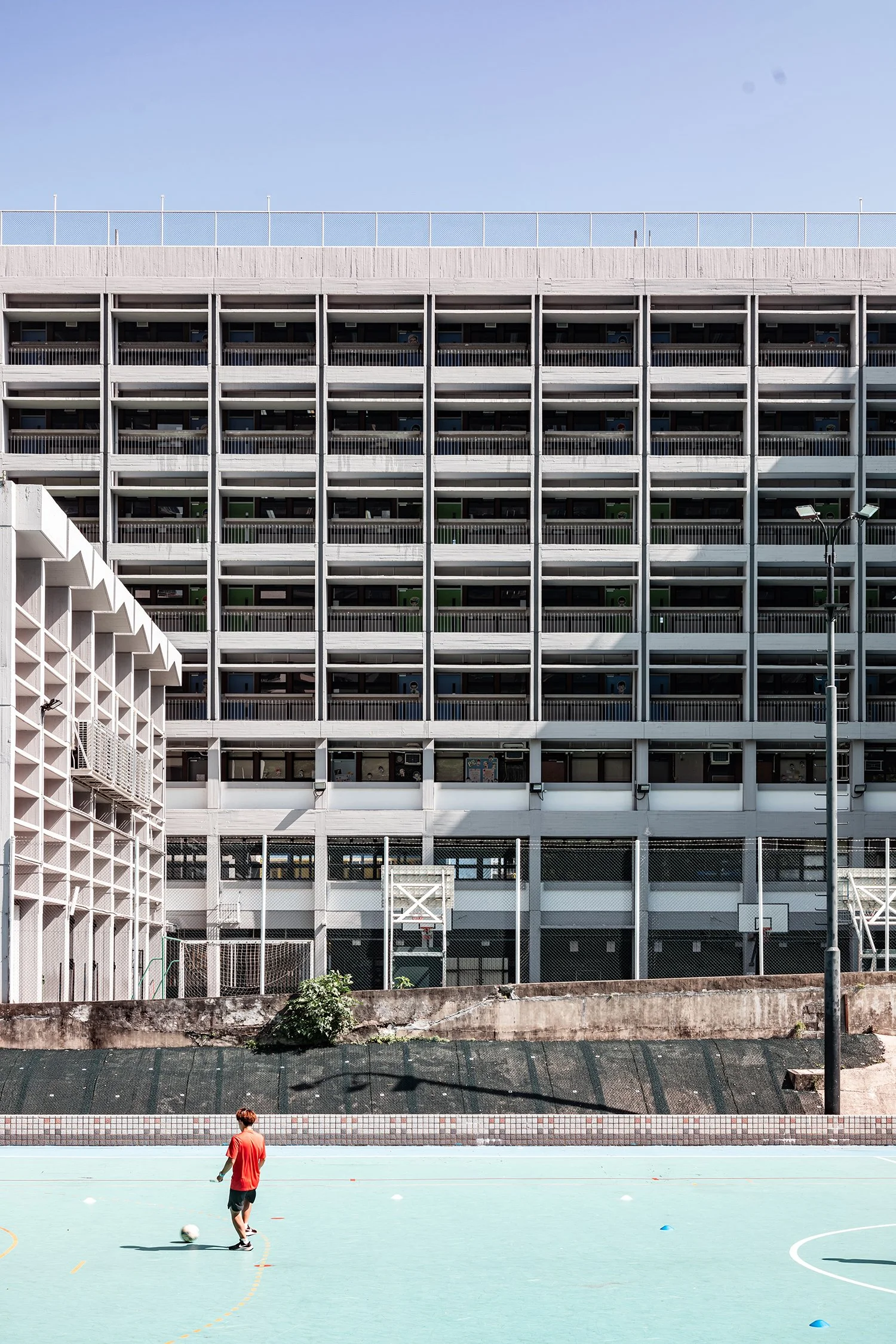
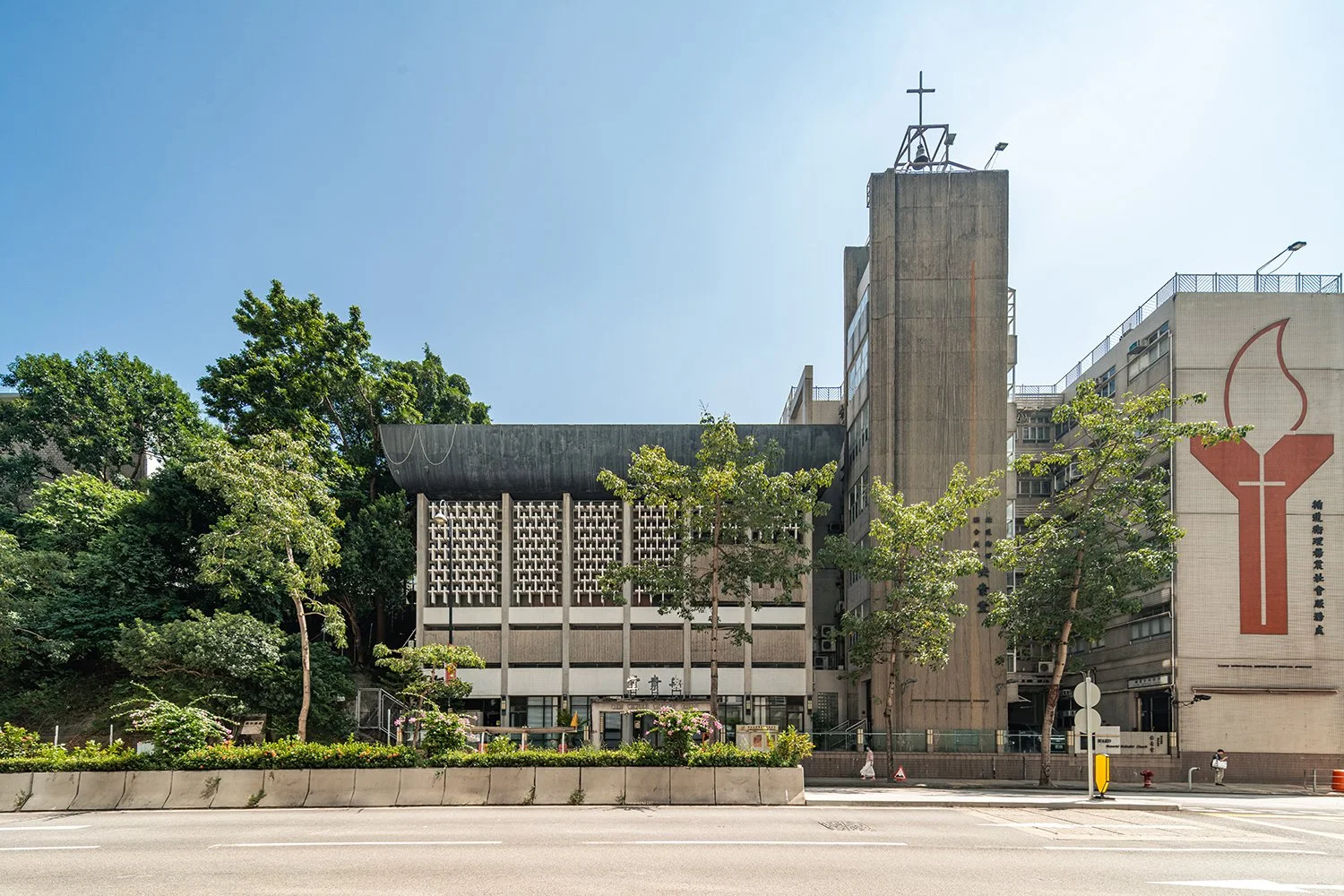
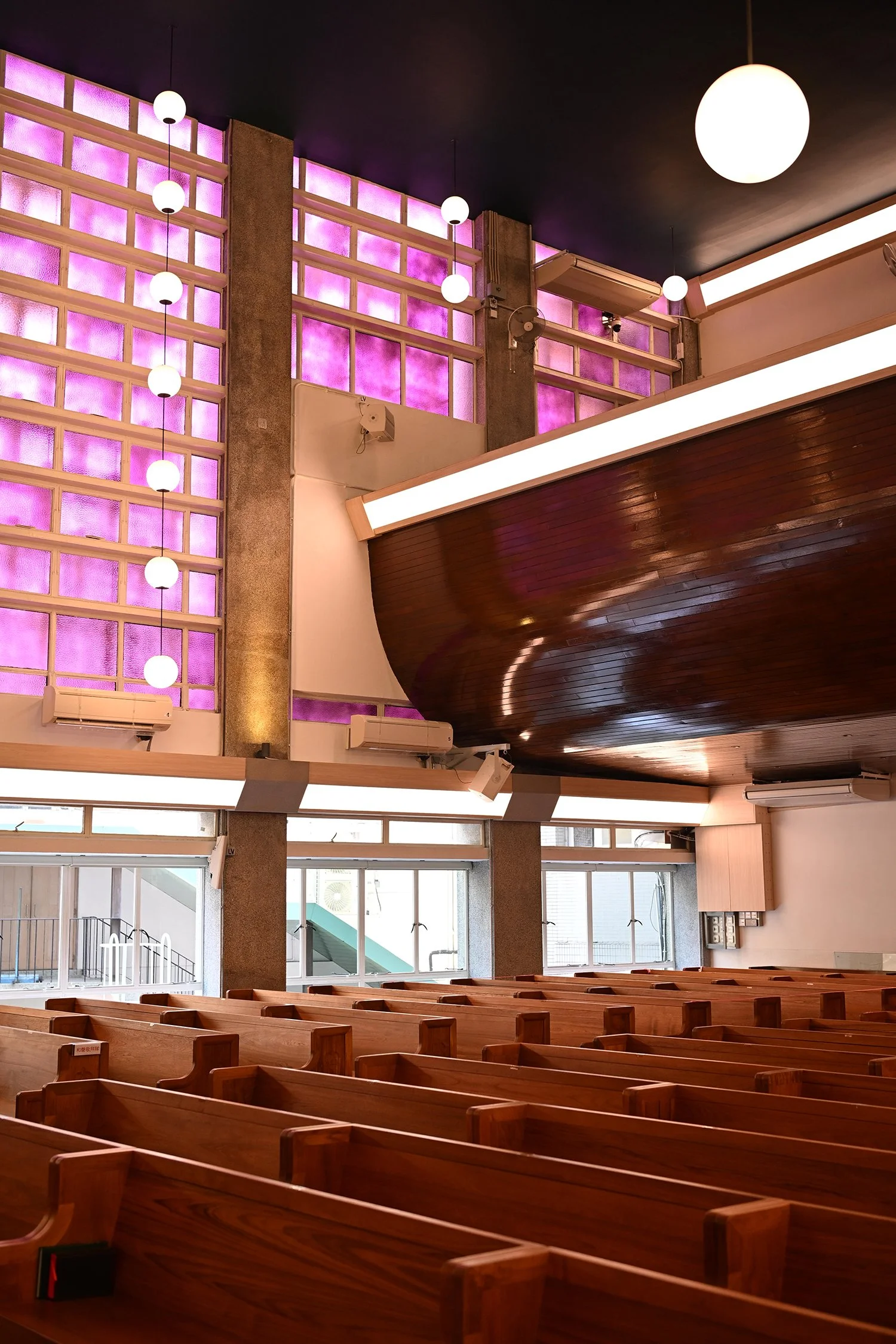




Endorsed by design visionaries such as Yoko Choy, China Editor of Wallpaper* magazine, and Mark Lee, former Chair of Architecture at Harvard GSD, the book has garnered international acclaim. As Yoko Choy observes, “As you turn the pages, a visual journey through Brutalist structures awaits, a one-of-a-kind memory palace that belongs to you and everyone who has ever existed in these spaces.” Mark Lee adds, “Brutalism in Hong Kong is an architecture of stoicism and resilience…a reflection of its time.”
The publication stands apart for its distinction: its predecessor was the most awarded title at the 5th Hong Kong Publishing Biennial Awards, receiving the Best Publishing Award – Social Sciences and two Special Awards for Marketing and Emerging Editing.
Bob Pang
About the Author
Bob Pang is a Hong Kong-registered architect and a passionate advocate for architectural culture. With over 15 years of practice across London, Vienna, Shanghai, and Hong Kong, including a tenure at the studio of Japanese master Arata Isozaki, his work bridges design, research, and curatorship. Bob is a recipient of the “40 Under 40” Outstanding Designer Award and accolades, including MIPIM Asia’s Gold Award and Japan’s Good Design “Best 100.” He led the research and exhibition BRUTAL! and has published multiple bestsellers on architectural discourse. He is currently a regular columnist for City Magazine.
Kevin Mak
About the Photographer
Kevin Mak is a registered architect turned architectural photographer whose work captures the essence of the built environment. A former member of OMA Hong Kong, Kevin now divides his time between photography, heritage research, and curatorial projects. His co-founding of the platform @streetsignhk reflects his commitment to urban memory, and his photographic work has garnered international acclaim, from Tatler’s “Generation T: 100” to the Dezeen Jury Prize and Architecture Photograph of the Year. This monograph marks a significant milestone in his ongoing dialogue with architecture and city life.
DETAILS AND AESTHETICS is not only a celebration of concrete, but also of collective memory, craftsmanship, and the quiet poetry found in overlooked forms. For the design curious and urban romantics alike, this book is an indispensable document of Hong Kong’s raw and resilient spirit.
A New Atlas of Japan’s Boundary - Defying Design Culture - SSOJ : The Japanese Spatial Designer Annual Vol. 01 is now released
JAPANESE SPATIAL DESIGNER ANNUAL Vol. 01 is now available, featuring 90 of Japan’s most innovative architects, interior and lighting designers, and creative visionaries. The publication is bilingual, visually rich, and relevant globally.
In a world where disciplines blur, and spatial intelligence becomes a new luxury, Japan's design community is stepping into the global spotlight - this time on its own terms. The JAPANESE SPATIAL DESIGNER ANNUAL Vol. 01, set to be released in April 2025, provides an unprecedented international showcase of 90 leading Japanese designers across various fields, including architecture, interior design, landscape, lighting, furniture, photography, and more.
Published by the Japan Spatial Designers Support Organization (SSOJ), this bilingual (Japanese - English) hardcover is not only a collector’s item but also a strategic resource designed for global curators, developers, gallery owners, and decision-makers looking for the best of Japan’s spatial culture.
Each featured designer is profiled over four editorially rich pages, including 10 and 14 project images and a dual-language narrative. These profiles offer a multidimensional view of how Japanese designers redefine the rules of form, function, and atmosphere.
The book launched with a special editorial feature titled “How Japanese Spatial Design Continues to Influence the World,” showcasing insights from industry leaders.
- Tadao Kamei, Chairman, Nikken Sekkei: "Void and Substance in Design"
- George Kunihiro, UIA Board Member: "The Global Perception of Japanese Space"
- Fumio Nanjo, Former Director, Mori Art Museum: "Public Art and Civic Identity"
- Tadanori Nagasawa, President, Musashino Art University: "The Future of Japanese Design Education"
- Plus, other cultural figures who are shaping Asia's design discourse.
The project's bold mission is to reposition Japanese spatial design as a transdisciplinary force—linking tradition to technology, minimalism to emotion, and craftsmanship to commerce. SSOJ, the editorial and strategic body behind this initiative, aims to connect designers with global opportunities, offering visibility and frameworks for international collaboration.
With its first volume, the JAPANESE SPATIAL DESIGNER ANNUAL lays the groundwork for a new kind of diplomacy, where design acts as the language and space tells the story.
For rights, media inquiries, or collaboration requests, please contact:
or visit: https://www.amazon.co.jp/JAPANESE-SPATIAL-DESIGNER-ANNUAL-日本の空間デザイナー年鑑/dp/4910949569
Earthboat V1: The Nomadic Timber Retreat Reviving Japan’s Forgotten Leisure Landscapes
In the foothills of rural Japan, PAN- PROJECTS quietly redefines the architecture of impermanence. Their latest prototype, Earthboat V1, is a mobile timber retreat built entirely from Cross-Laminated Timber — designed not to claim land, but to touch it lightly and move on. Equal parts shelter and statement, the 20.5m² cabin revives forgotten leisure sites with Scandinavian clarity and Japanese restraint. Featuring a sauna, modular interiors, and zero foundations, the Earthboat is less about escape than encounter — a new, slower ritual of living with nature.
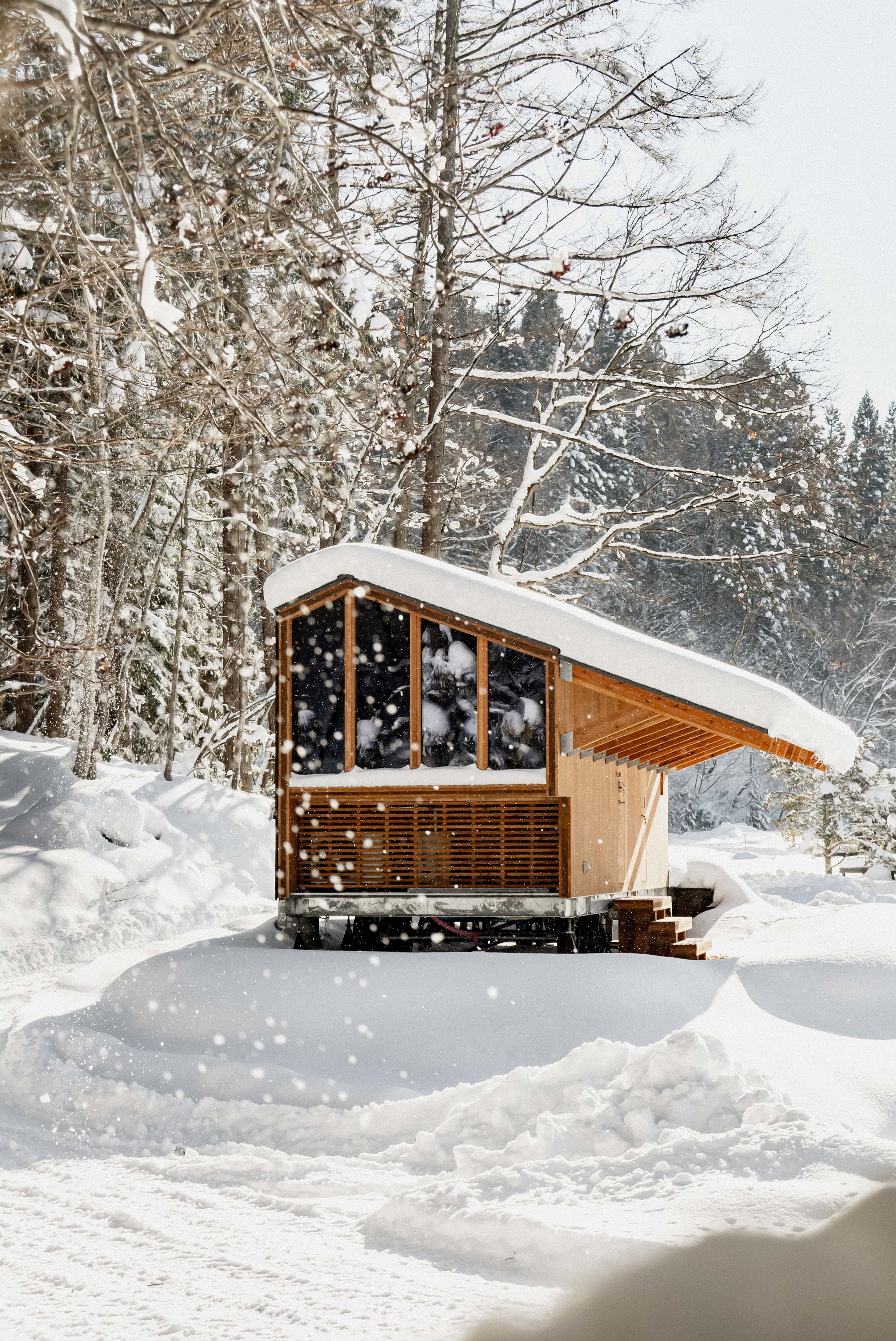
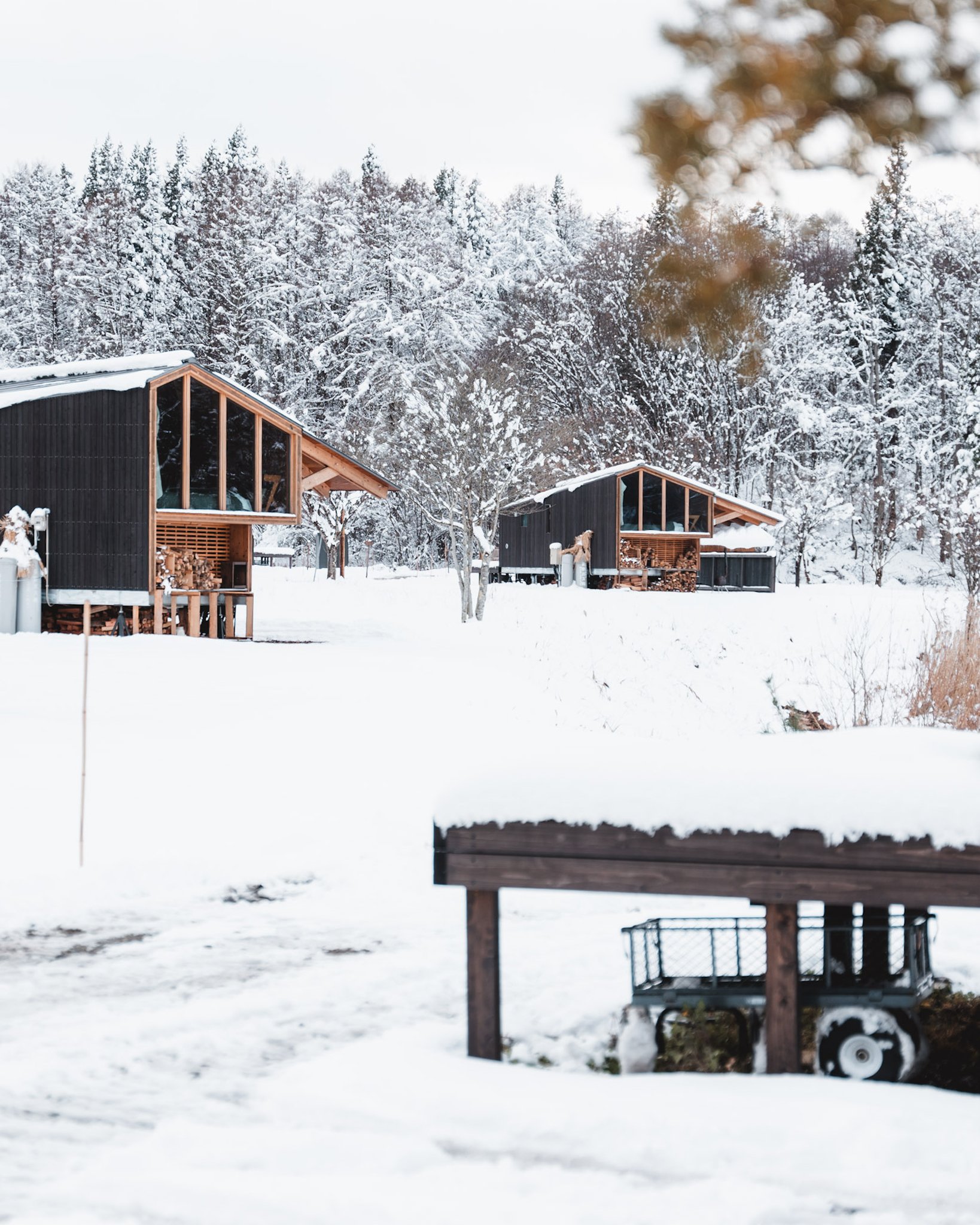
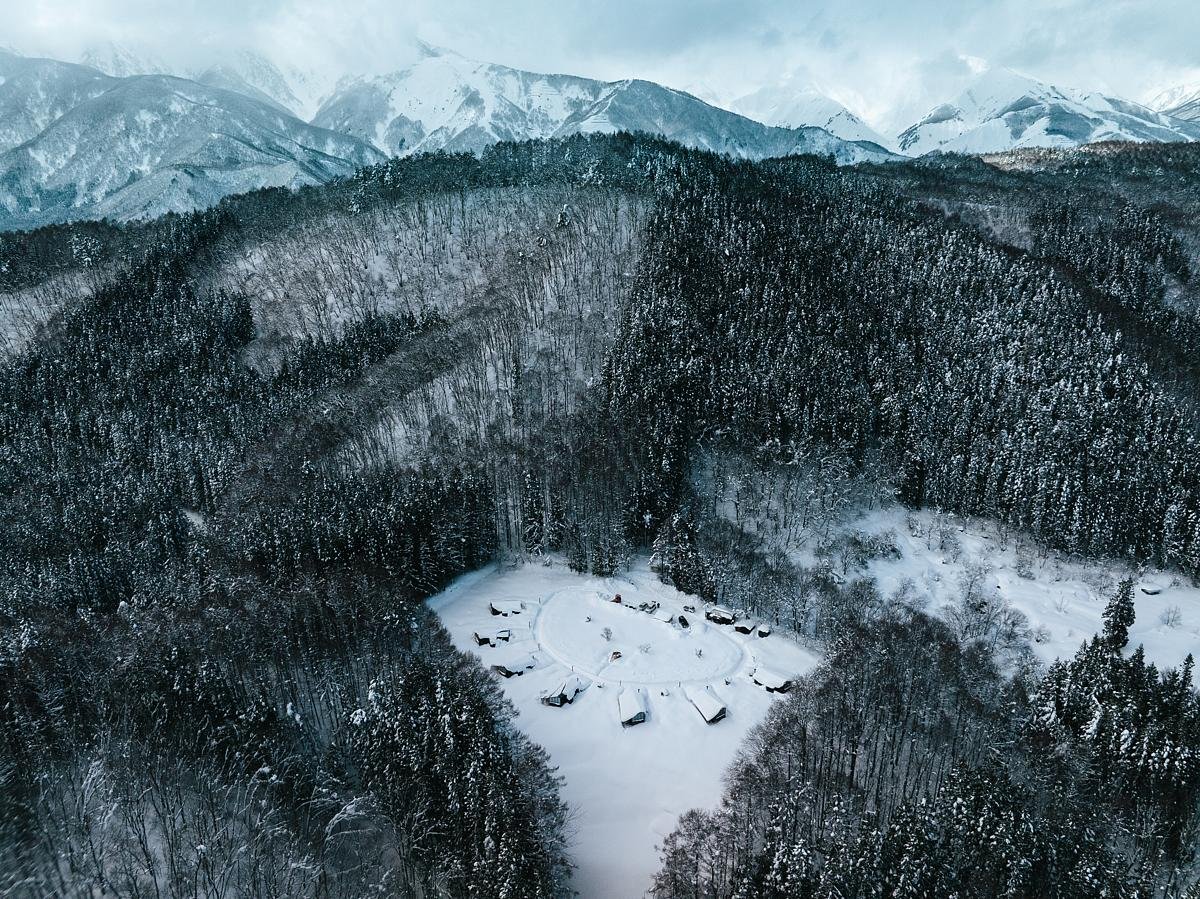

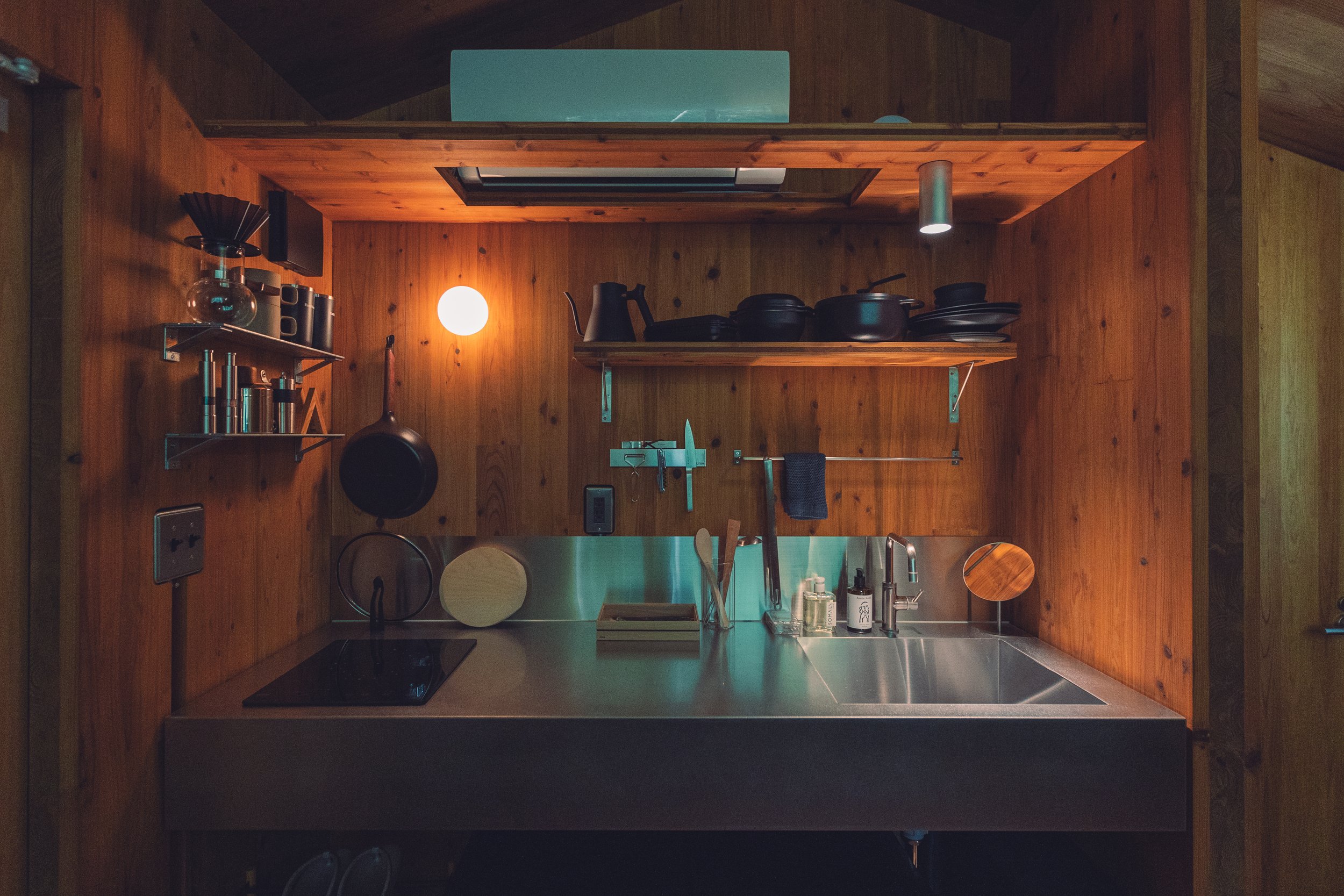
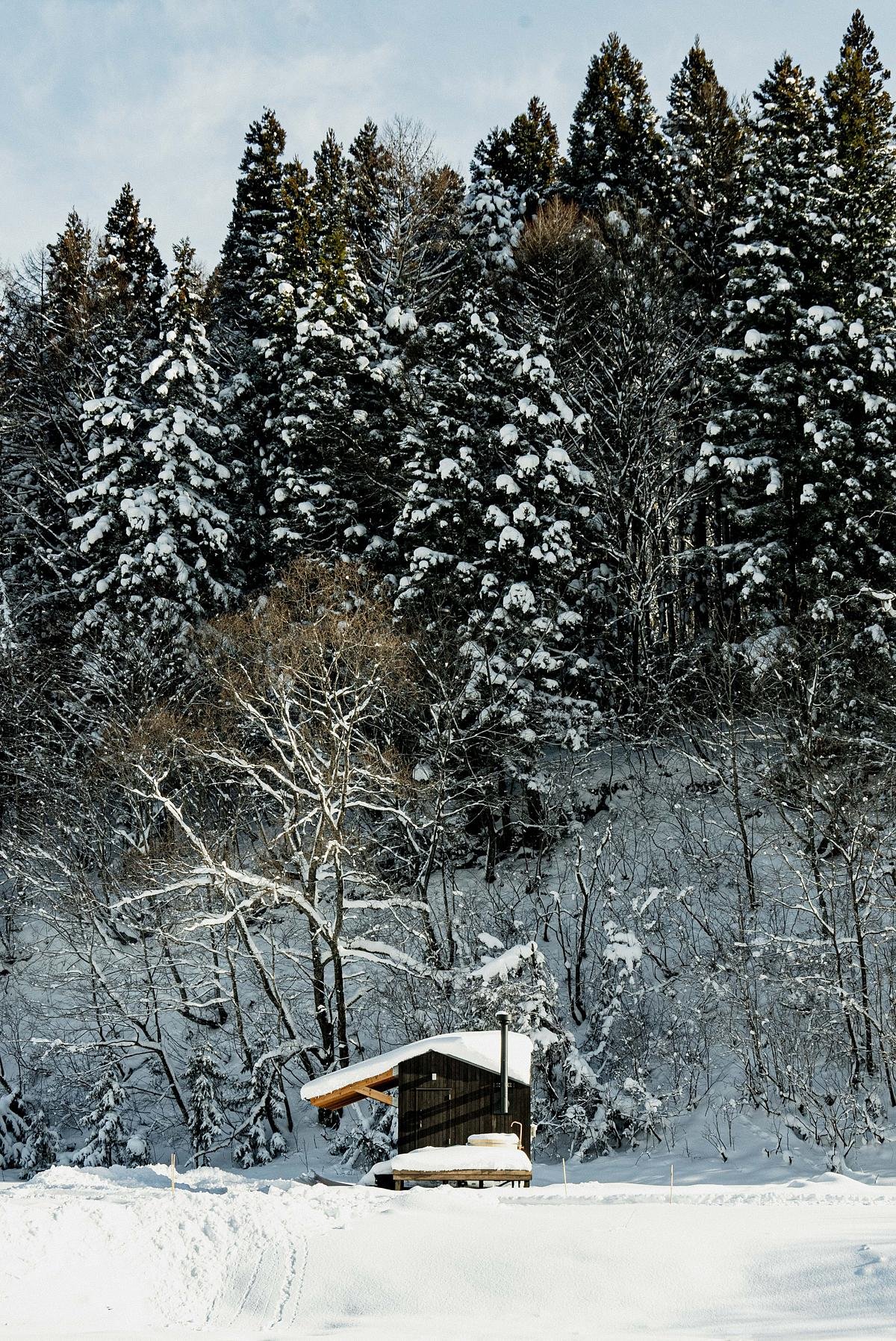
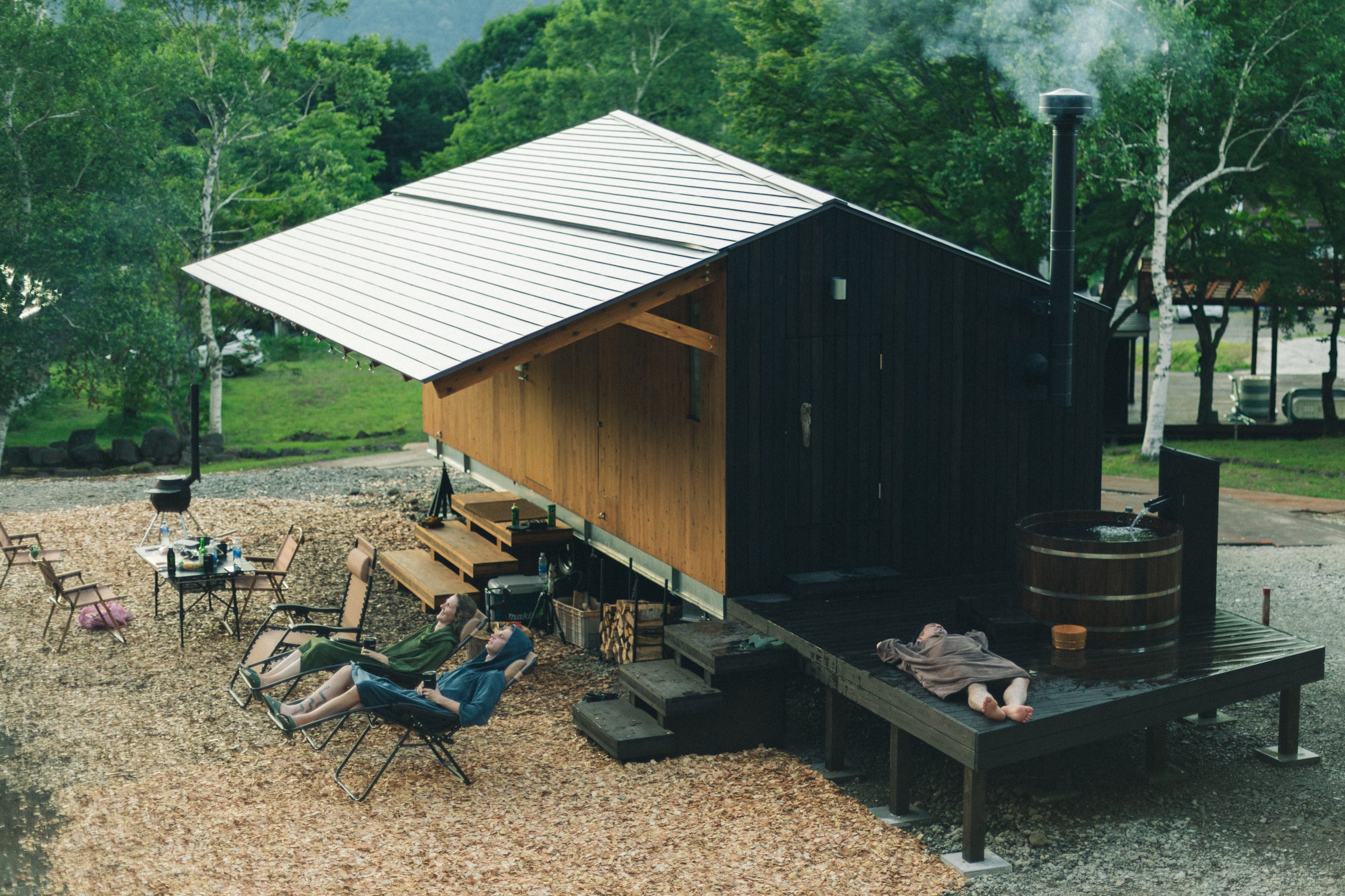
In a serene corner of rural Japan, a remarkable transformation is unfolding—one that reimagines our relationship with space, nature, and the forgotten realms of post-bubble leisure culture. PAN-PROJECTS, a design studio based in London and Tokyo, celebrated for its elegantly restrained interventions and architectural diplomacy, is at the forefront of this movement. Their latest endeavour, Earthboat V1, is a powerful prototype: a compact, mobile cabin crafted entirely from Cross-Laminated Timber (CLT), designed to “float” gracefully above the land it embraces.
The Earthboat transcends nostalgia for countryside glamping; it embodies a thoughtful act of architectural reclamation. Once, Japan’s economic boom filled the countryside with leisure attractions like golf resorts, ski fields, and fishing ponds. Today, many of these sites lie dormant, echoes of a hopeful past. Earthboat V1 gently interacts with these spaces with its humble 20.5 square meter footprint. It eschews traditional foundations, resting lightly on the terrain, preserving the landscape while inviting a refreshing temporary habitation.
At first glance, the cabin's silhouette is strikingly modernist—a beautifully balanced architectural haiku in timber. A refined yet functional layout features a sauna, modular storage, and panoramic views that dissolve the boundaries between the indoor and outdoor worlds. The prefabricated design enhances assembly and ensures the unit can be relocated, minimizing environmental impact and adapting to evolving needs or seasonal contexts.
The concept remains dynamic, with around sixty Earthboat units now distributed across seven sites in Japan. This architecture moves—responsive to the land, memories, and utility. Each deployment signifies an act of regeneration—a fleeting reanimation of neglected spaces, sidestepping conventional development's permanence (and often abandonment).
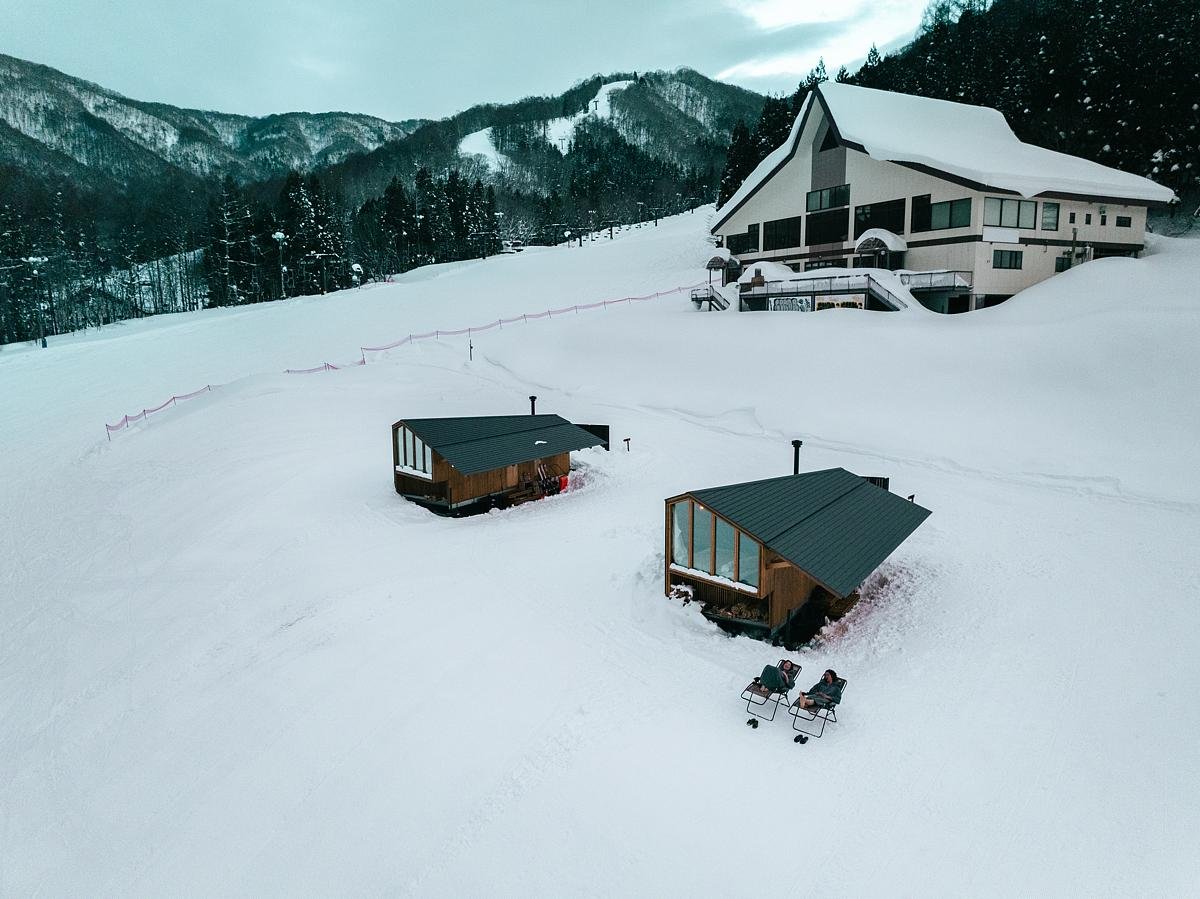
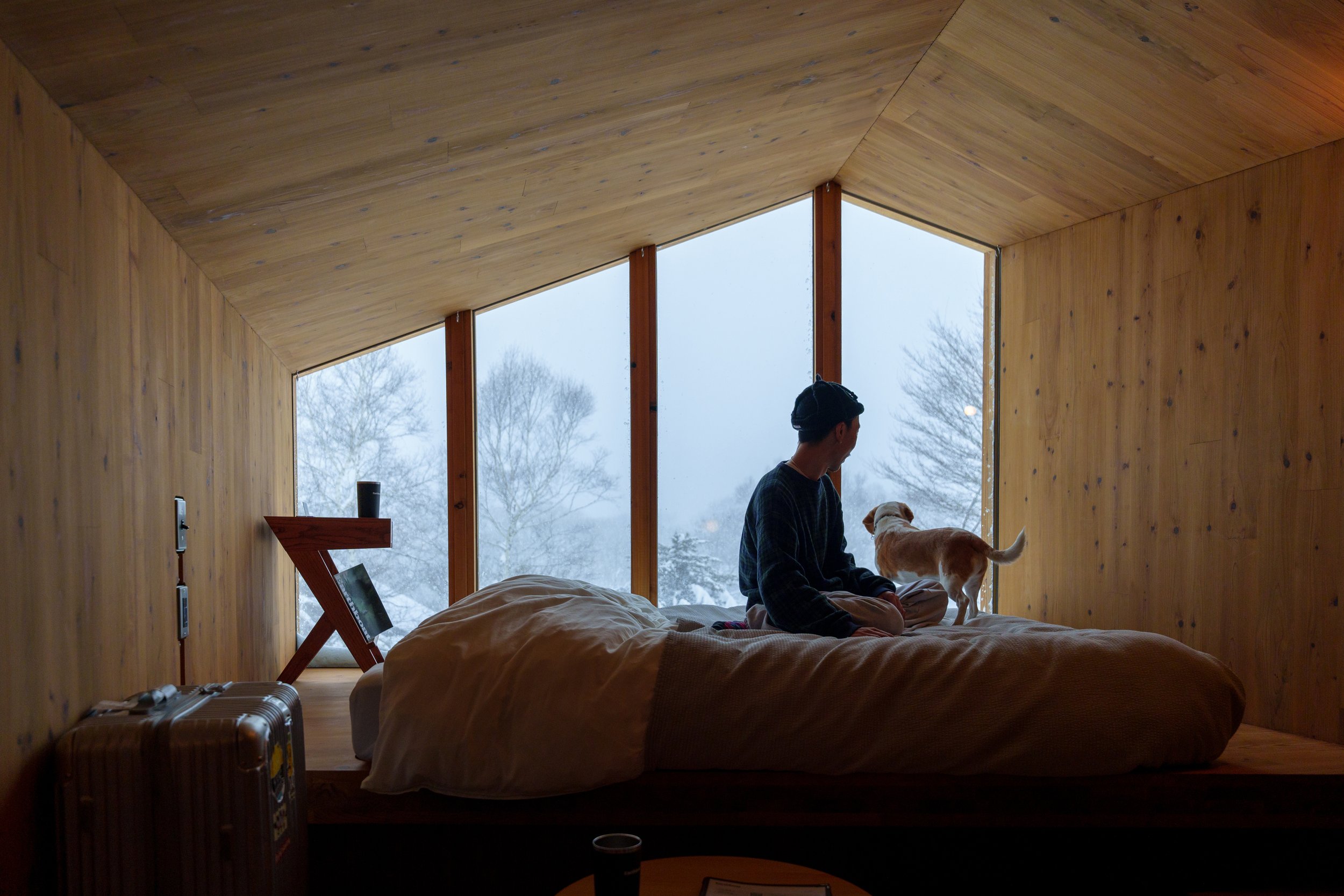

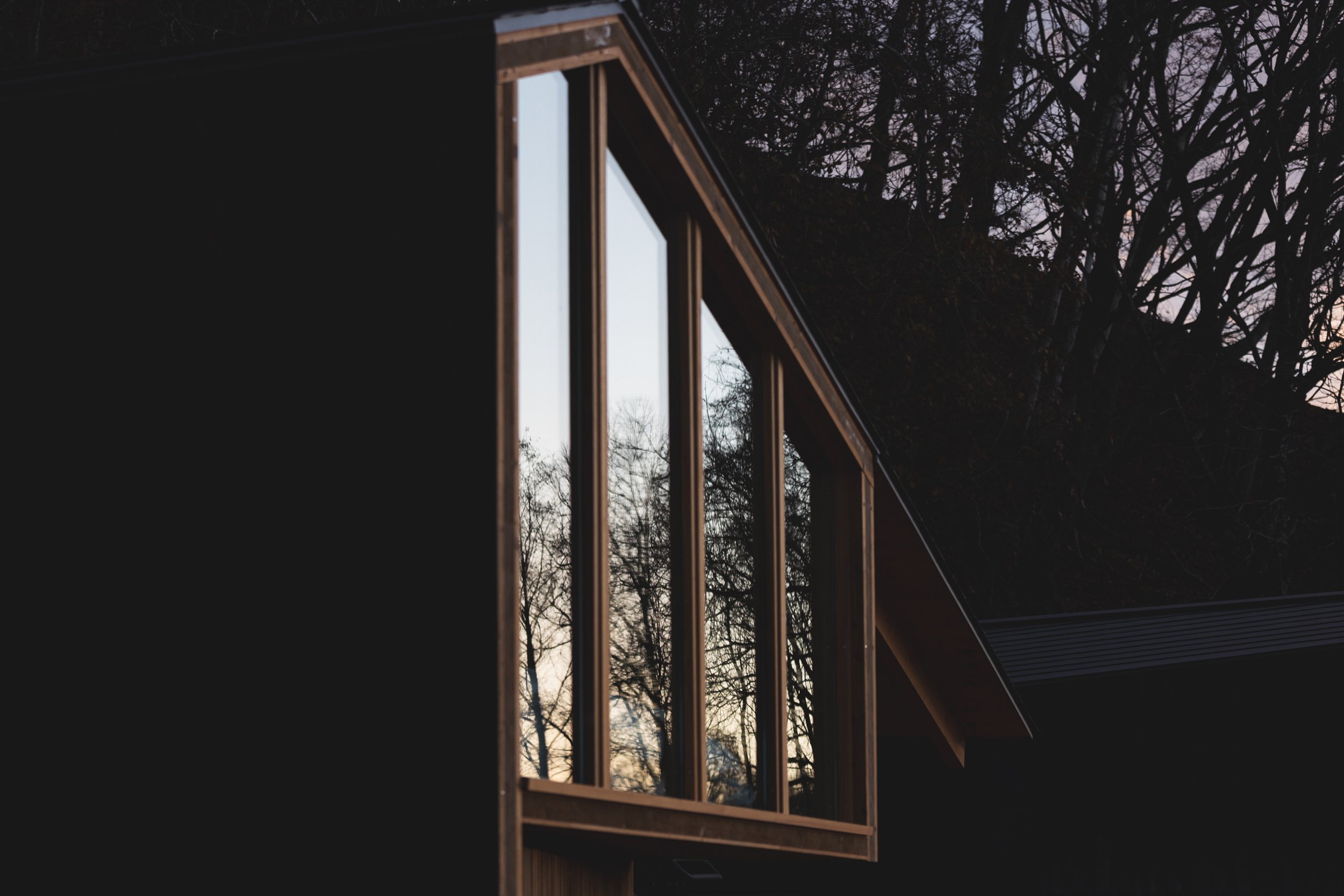
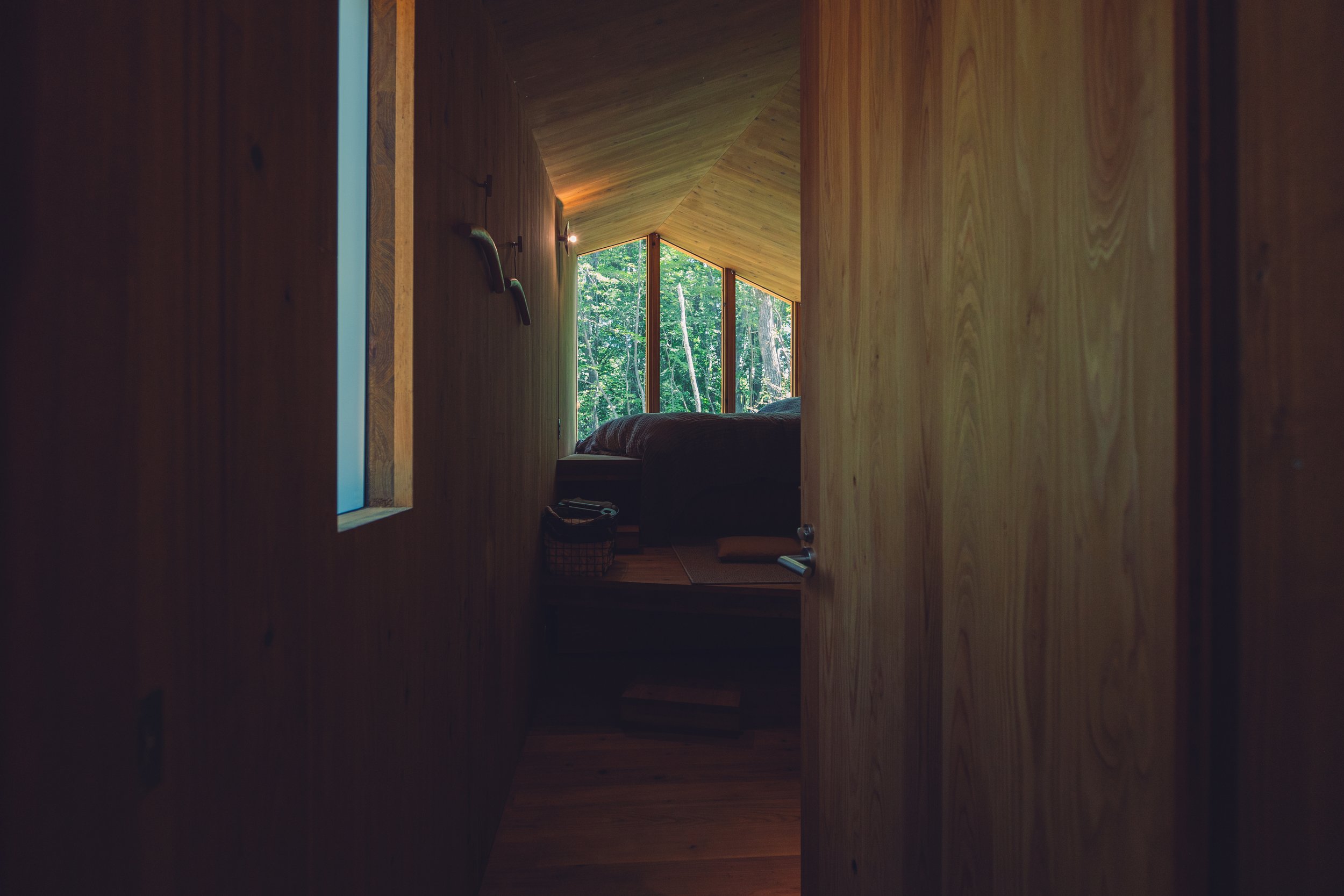
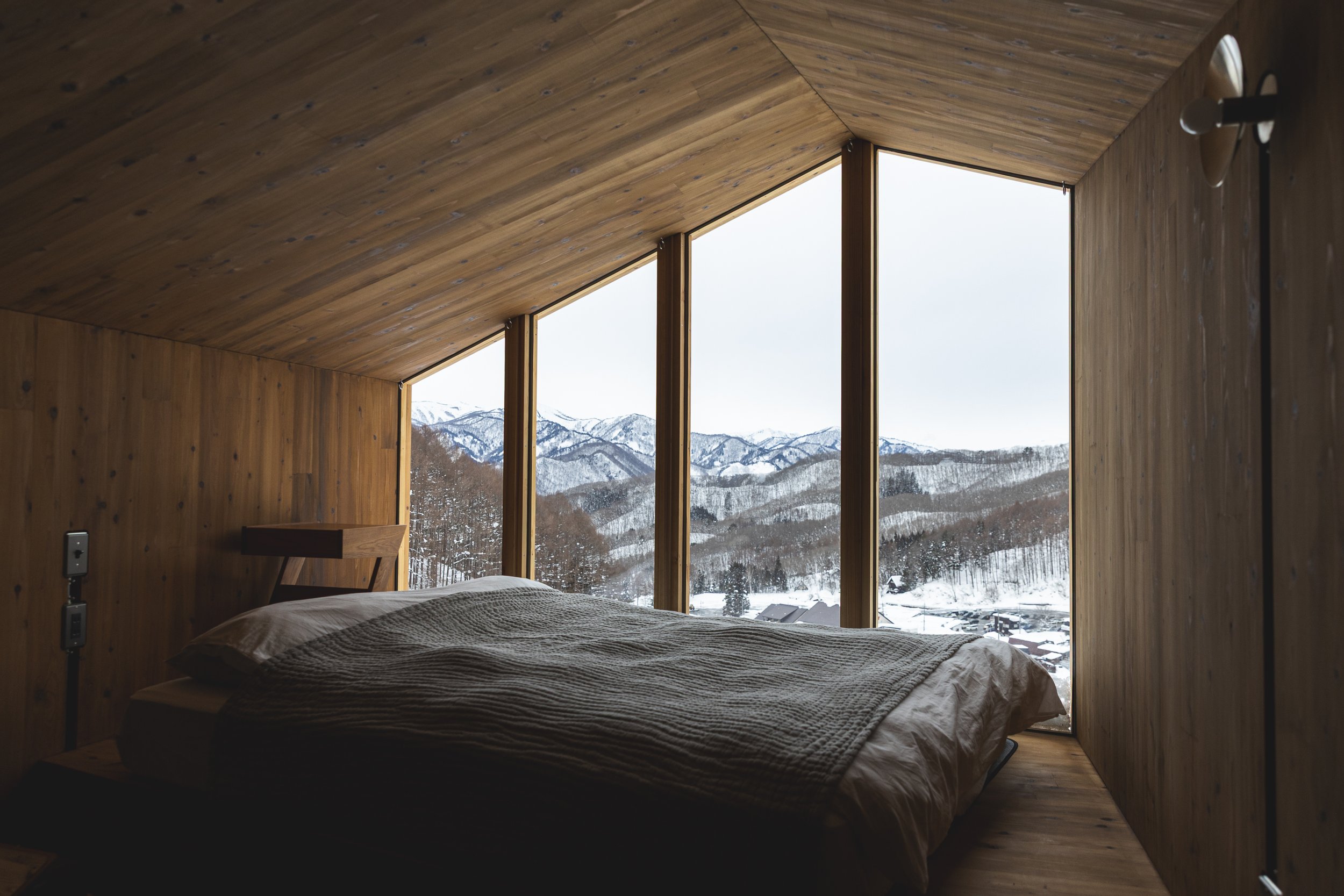

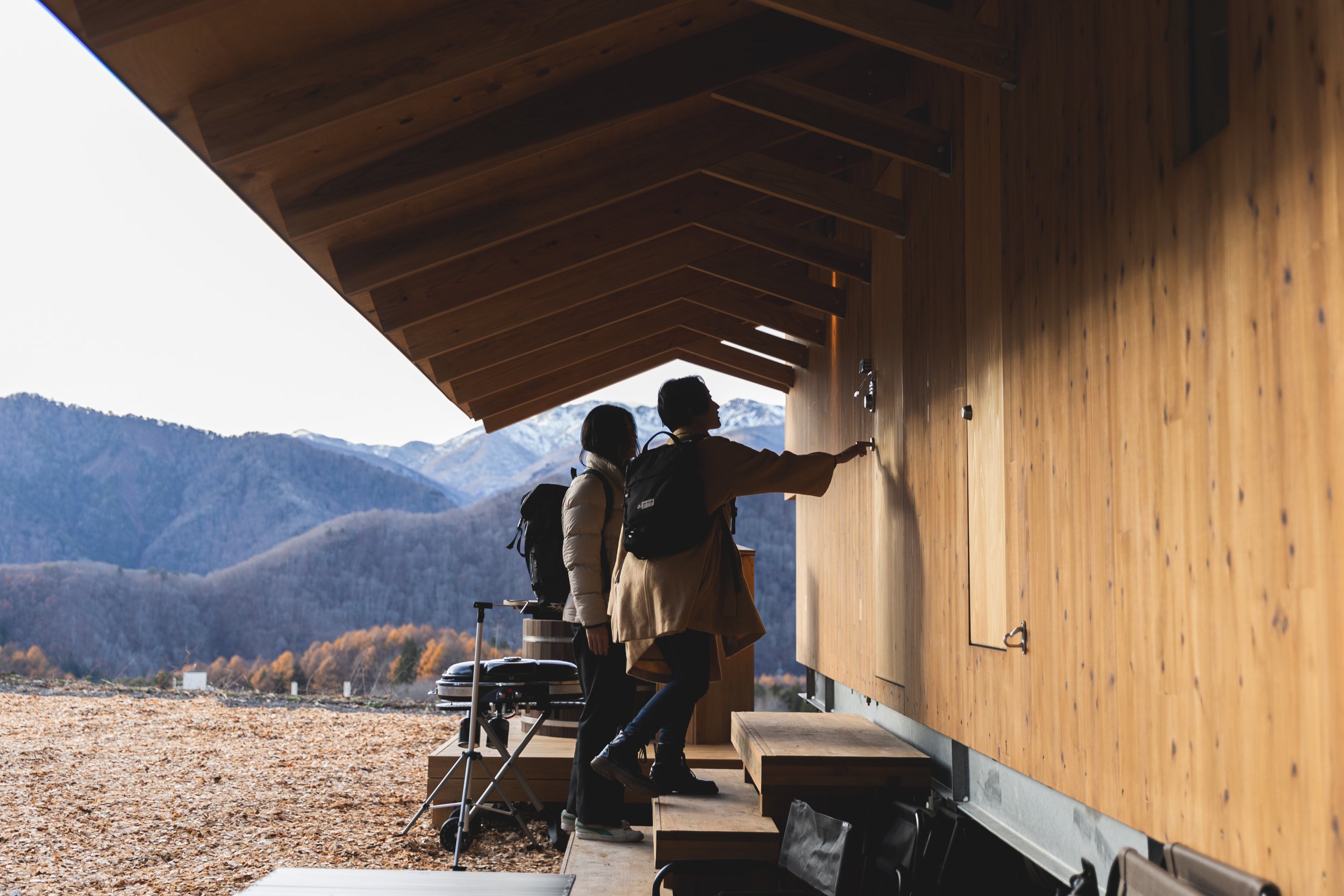
The true innovation lies in its material intelligence. In a culture where CLT tends to be reserved for larger structures, Earthboat V1 recalibrates this scale, marrying high-performance, sustainable timber technology with a human-centred, emotionally resonant format—a quiet revolution in Japanese architecture.
As both a retreat and a powerful idea, Earthboat V1 exemplifies the pinnacle of hospitality architecture: providing shelter and offering a new lens through which to experience a place. It invites us to explore how to inhabit the in-between—not as owners or consumers but as thoughtful stewards of space and time.
ABOUT PAN_PROJECTS
PAN- PROJECTS is a London-based architectural design studio co-founded in 2017 by Japanese architects Yuriko Yagi and Kazumasa Takada. The studio engages in architecture, interior, installation, product, and exhibition design through multidisciplinary collaborations.
Founding Partners:
Yuriko Yagi, M.Arch, Arkitekt MAA: Yagi earned her Bachelor and Master of Architecture Design degrees from Kyoto Institute of Technology in 2014 and 2017, respectively.
Kazumasa Takada, M.Arch, ARB/RIBA: Takada completed his Bachelor of Architecture at Waseda University in 2015 and obtained a Master of Arts in Architecture from The Royal Danish Academy of Fine Arts in 2017.
Left: Yuriko Yagi
Co-founder, PAN- PROJECTS | Arkitekt MAA
Right: Kazumasa Takada
Co-founder, PAN- PROJECTS | Architect ARB/RIBA
PAN- PROJECTS has been recognized in the architectural community, including being longlisted for the Emerging Architecture Studio of the Year and Large Retail Interior Design categories at the 2021 Dezeen Awards.
Website: https://pan-projects.com
Studio Cinema: Redefining Cinematic Design in Macau
Studio City Phase 2 in Macau offers more than just a cinematic experience; it introduces a new design language where technology, materials, and spatial storytelling come together. Designed by OFT Interior under the creative direction of CM Jao and Ken Cheung, this ambitious project also includes contributions from Japanese lighting designer Koichi Tanaka and Lightlinks International. It masterfully merges form, function, and innovation. Each element of the space engages the senses, creating an environment that blurs the boundaries between architecture and performance.








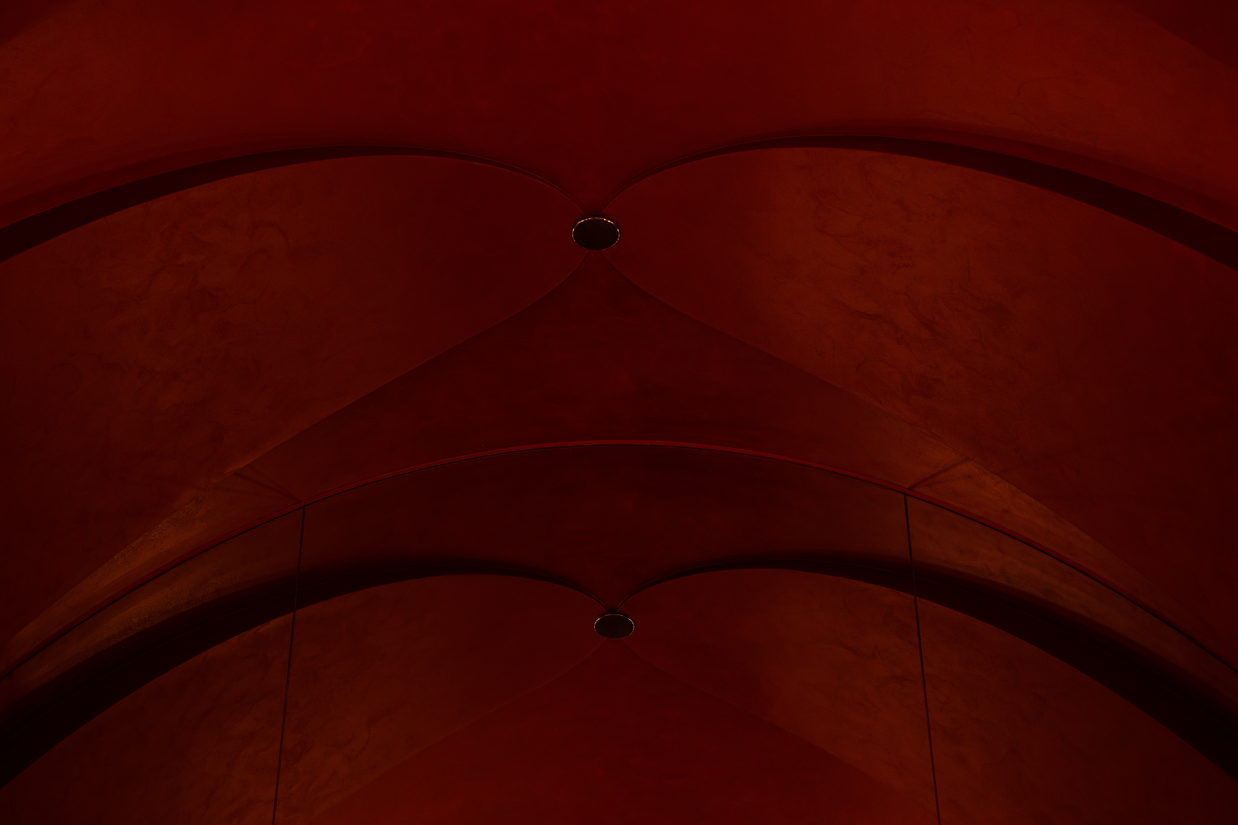




Studio City Phase 2 in Macau offers more than just a cinematic experience; it introduces a new design language where technology, materials, and spatial storytelling come together. Designed by OFT Interior under the creative direction of CM Jao and Ken Cheung, this ambitious project also includes contributions from Japanese lighting designer Koichi Tanaka and Lightlinks International. It masterfully merges form, function, and innovation. Each element of the spaceengages the senses, creating an environment that blurs the boundaries between architecture and performance.
A Dramatic Entrance: Setting the Stage
The journey begins in the entrance lobby, which resembles a visual symphony of textures and materials. The glass curtain wall features a white gradient film sticker that softens the exterior light while still allowing for visibility. Behind this, the lighting interacts with the gradient glass to create a theatrical ambiance. Stainless steel curves define the ticket counter and the metallic-painted feature counters, complemented by a ripple stainless steel wall and fluted wall tiles for added texture. Above, a metallic-painted curved ceiling integrates concealed lighting troughs, while the stone flooring provides a sense of permanence that anchors the space. Motion graphic LED screens introduce kinetic energy, instantly immersing visitors in the cinematic experience.
Architectural Lighting and Spatial Drama
The design creatively utilizes light and shadow to evoke a theatrical stage, fostering audience engagement. Milky acrylic panels with concealed lighting highlight important areas, while reflective surfaces amplify the interaction between light and materials. This combination creates a dynamic and vibrant environment, setting the stage for an immersive experience.










IMAX and Auditorium Features: Precision and Atmosphere
Inside the IMAX theater, the space is defined by blue fabric wall features and a black acoustic ceiling with LED lighting. Concealed LED lighting enhances the visual drama, while black wood vinyl stair walls and handrails provide a striking contrast. Grey-toned carpets soften the atmosphere, ensuring both acoustic excellence and comfort.
Each house in the cinema is designed for a unique experience:
- House 2 (Reclining):** Features purple and mud-yellow fabric walls combined with concealed LED lighting and a black acoustic ceiling. The warm, muted tones create a balance of luxury and coziness.
- 4DX House:** Showcases red and navy fabric walls that contrast with concealed LED lighting. The addition of black wood vinyl stair walls and grey-tone carpets maintains consistency in the overall aesthetic while ensuring functional comfort.
Typical Houses:** Have grey and blue fabric walls paired with concealed LED lighting, creating a subdued yet sophisticated ambiance. The black acoustic ceiling and wood vinyl wall coverings emphasize the architectural precision.
The Director’s Club: Exclusive Luxury
The Director’s Club, which includes Houses 5 and 6, elevates the cinematic experience to a whole new level. House 5 showcases iridescent fabric curved walls with a water wave lighting effect, blending shades of blue and green fabric with highlights of orange and red. Concealed LED lighting enhances the curvature of the walls, creating a fluid, organic feel. In House 6, the green fabric curved walls continue the water wave motif, complemented by beige and grey fabric accents. Both houses feature recessed floor lighting and advanced acoustic treatments, ensuring an exclusive and intimate atmosphere.


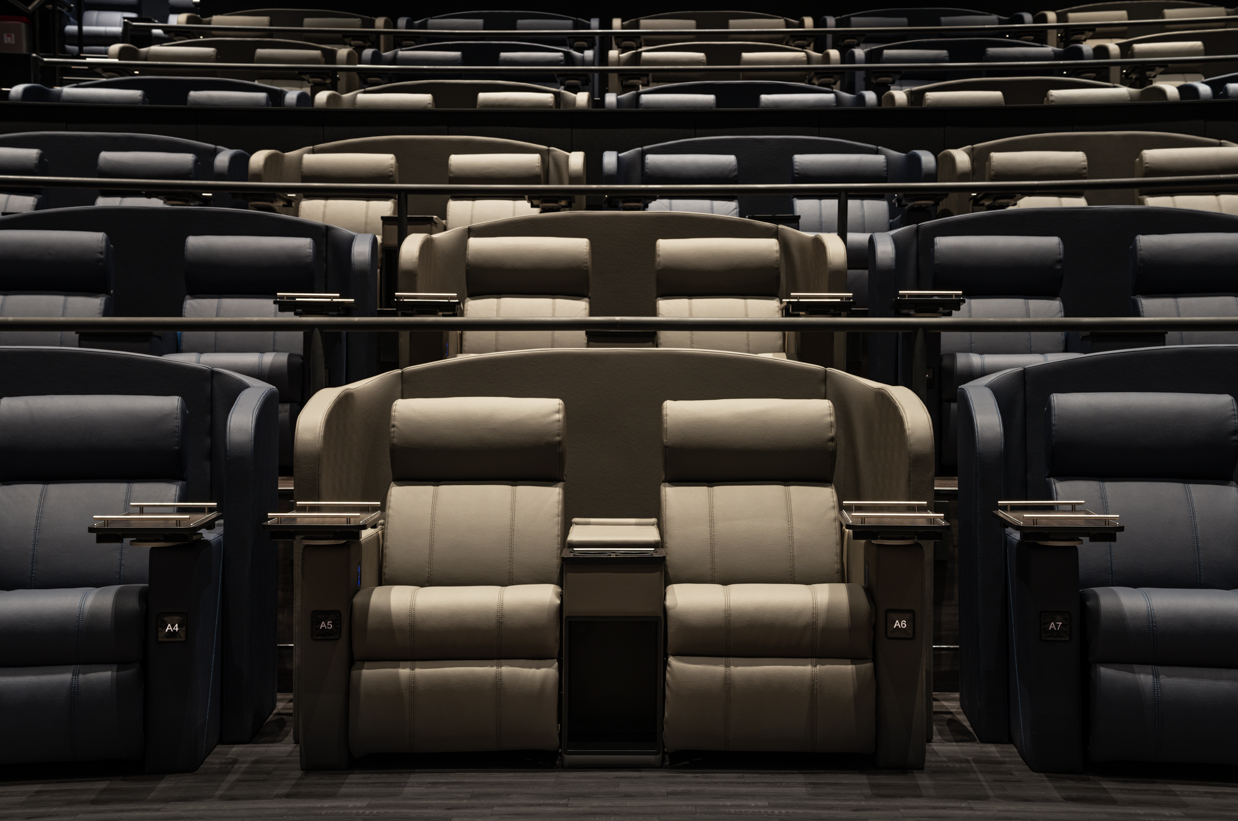

Dynamic Corridors and Lounge Spaces
The corridors connecting the theaters are designed as transitional spaces that enhance the cinematic experience. Cove lighting follows the architectural curves, while reflective materials enhance the visual rhythm. The Director’s Club Lounge offers a sophisticated yet welcoming atmosphere, featuring high tables and integrated 55-inch TV lightboxes, providing an ideal space for socializing before or after a film.
The Cinematic Future
Studio City Cinema is more than just a venue for watching films; it is a space where every material, light, and texture contributes to its narrative. Each element, from the rippling stainless-steel walls to the iridescent fabric panels, invites exploration and engagement. By combining cutting-edge technology with innovative design, OFT Interior has created an environment that redefines cinematic architecture, providing audiences with an experience that goes far beyond the screen. Studio City Cinema is not merely a building; it is a performance in its own right—a landmark of design excellence in Macau.
For more information, please visit: https://www.oftinteriors.com
